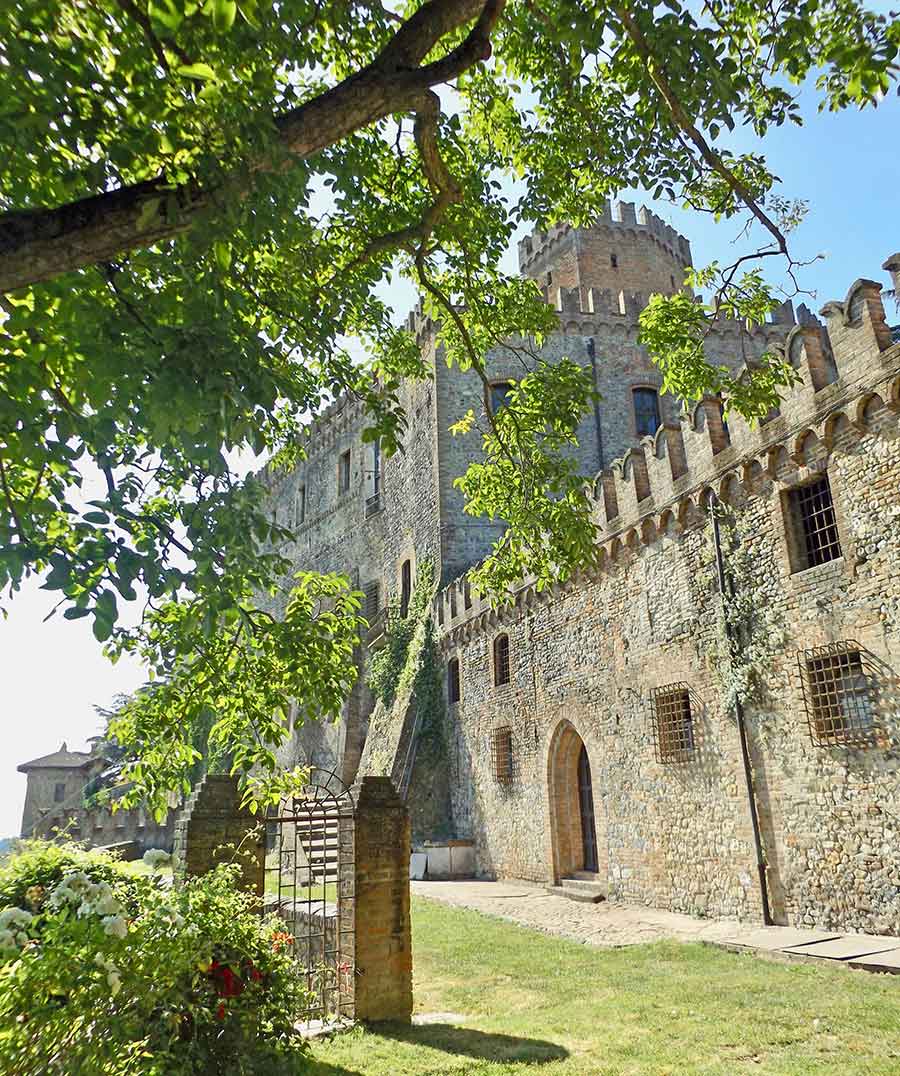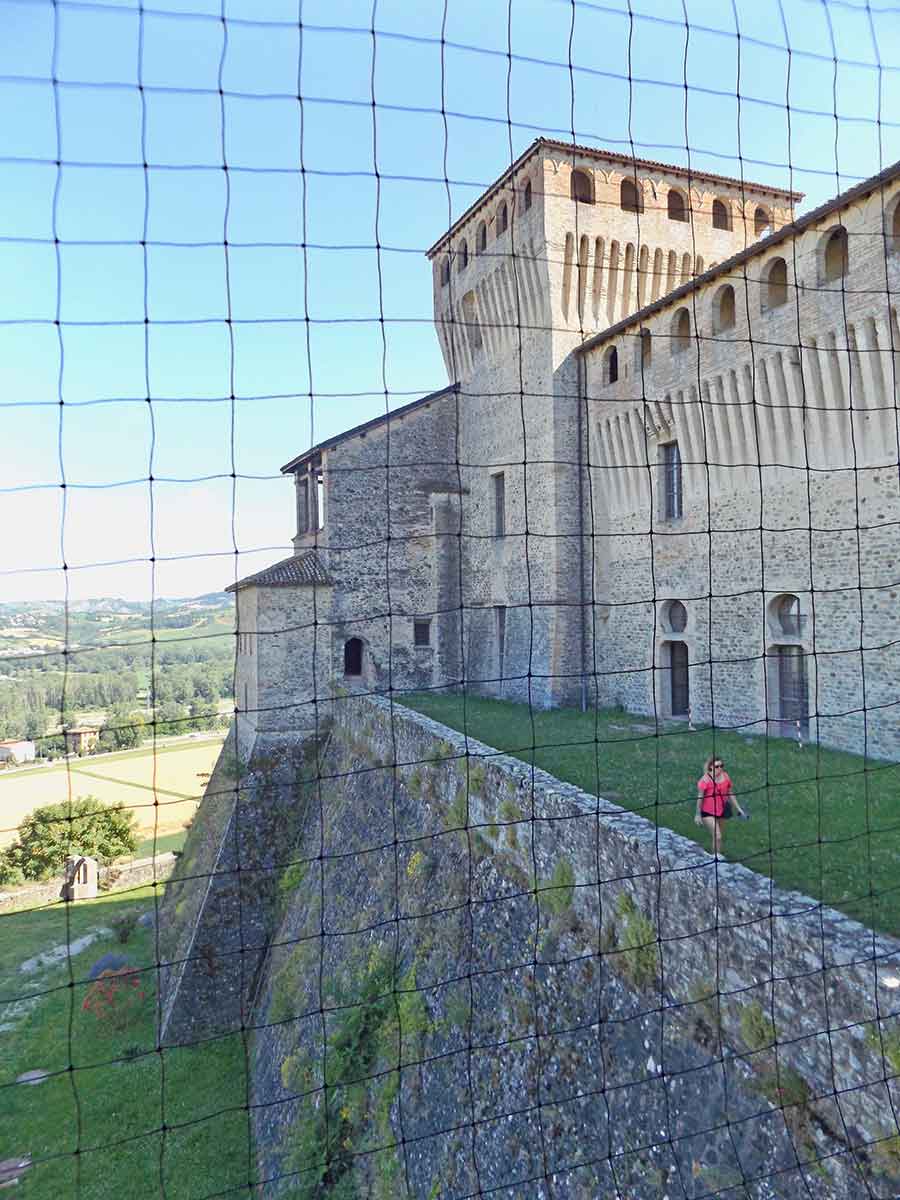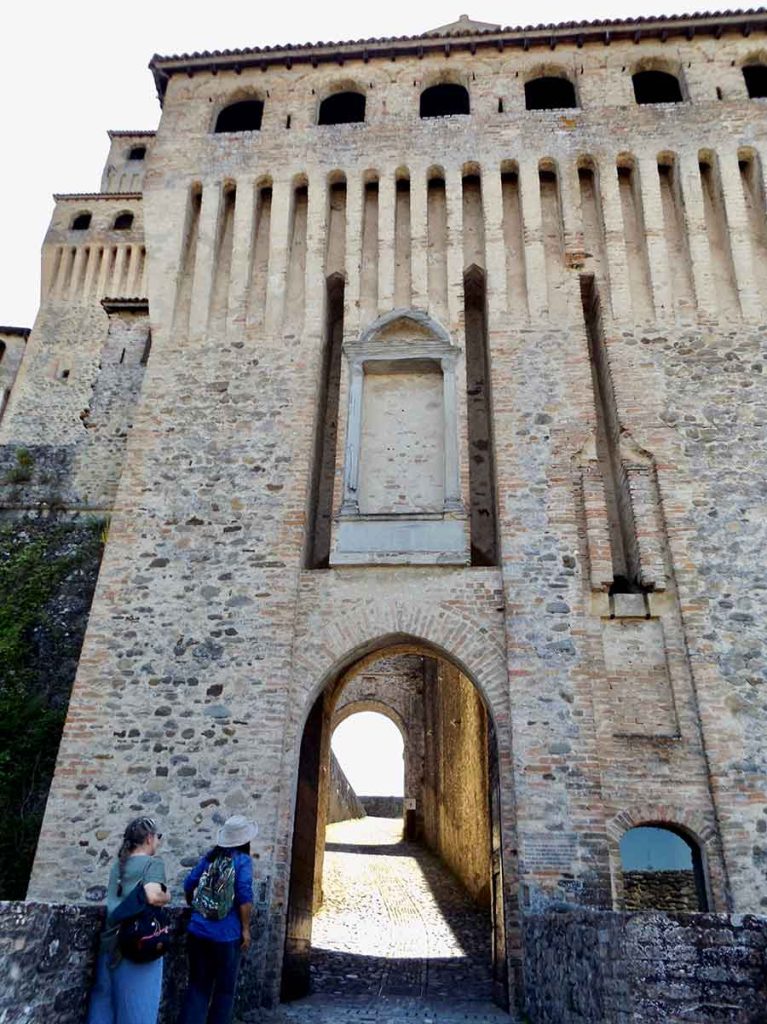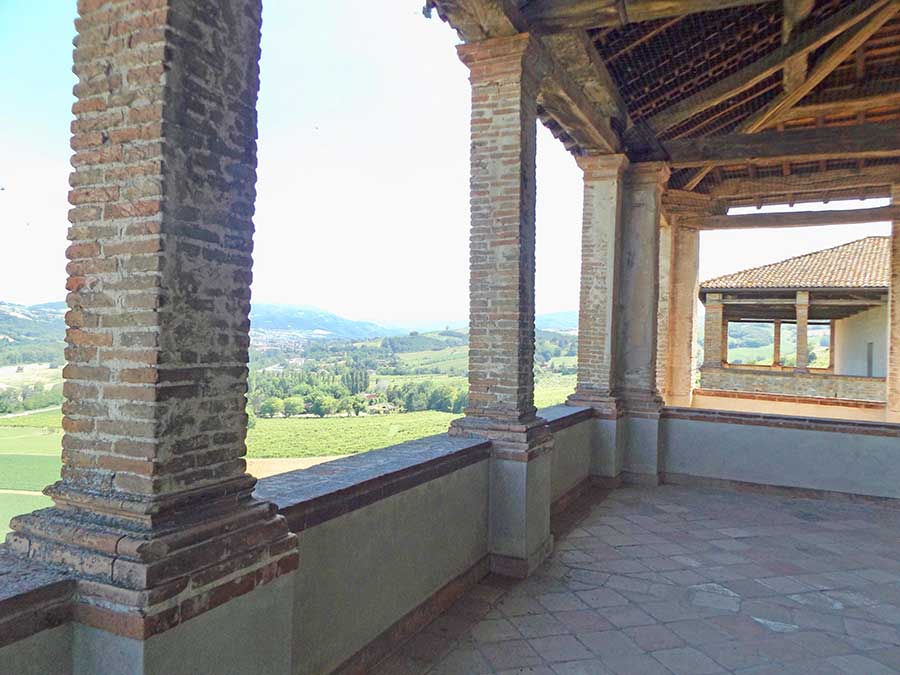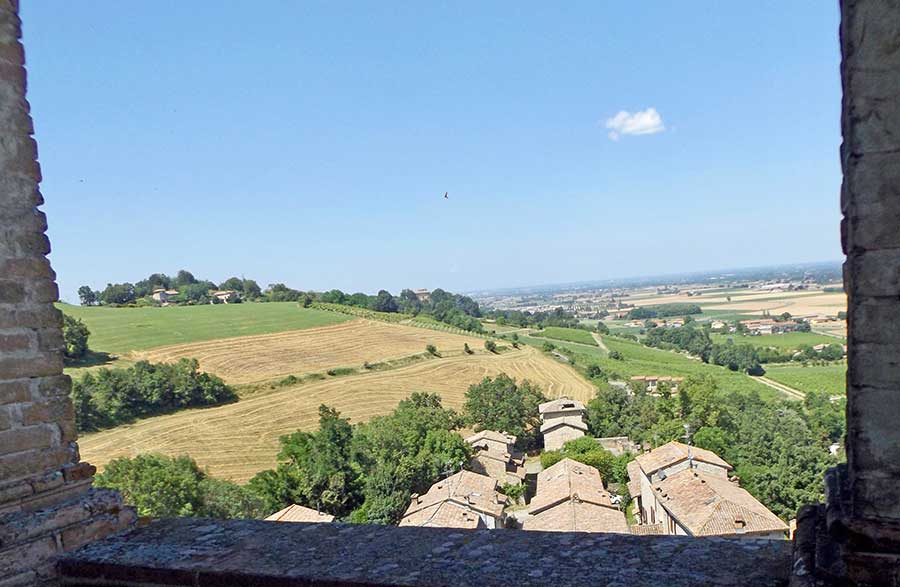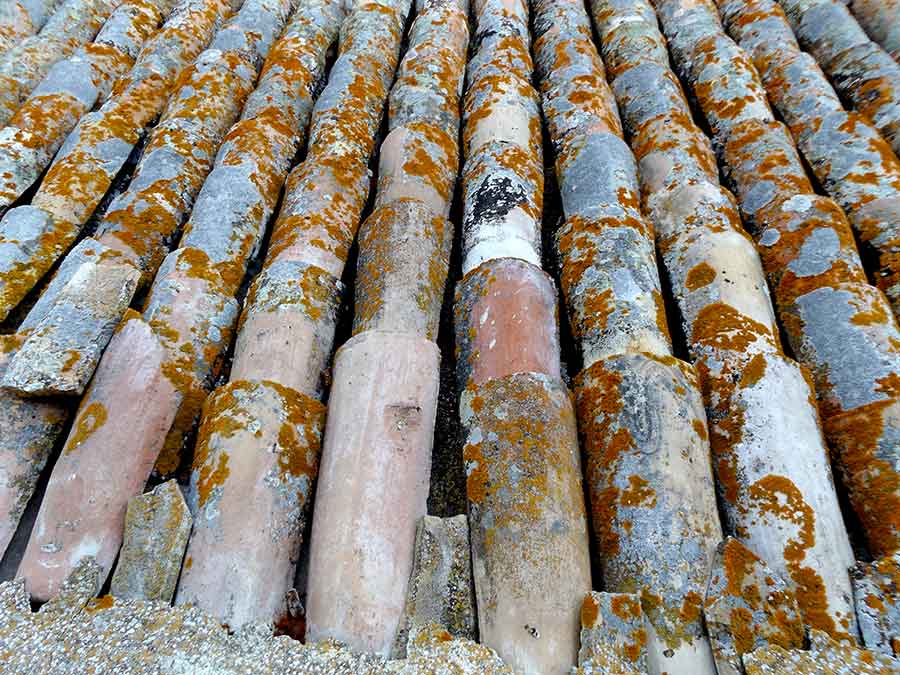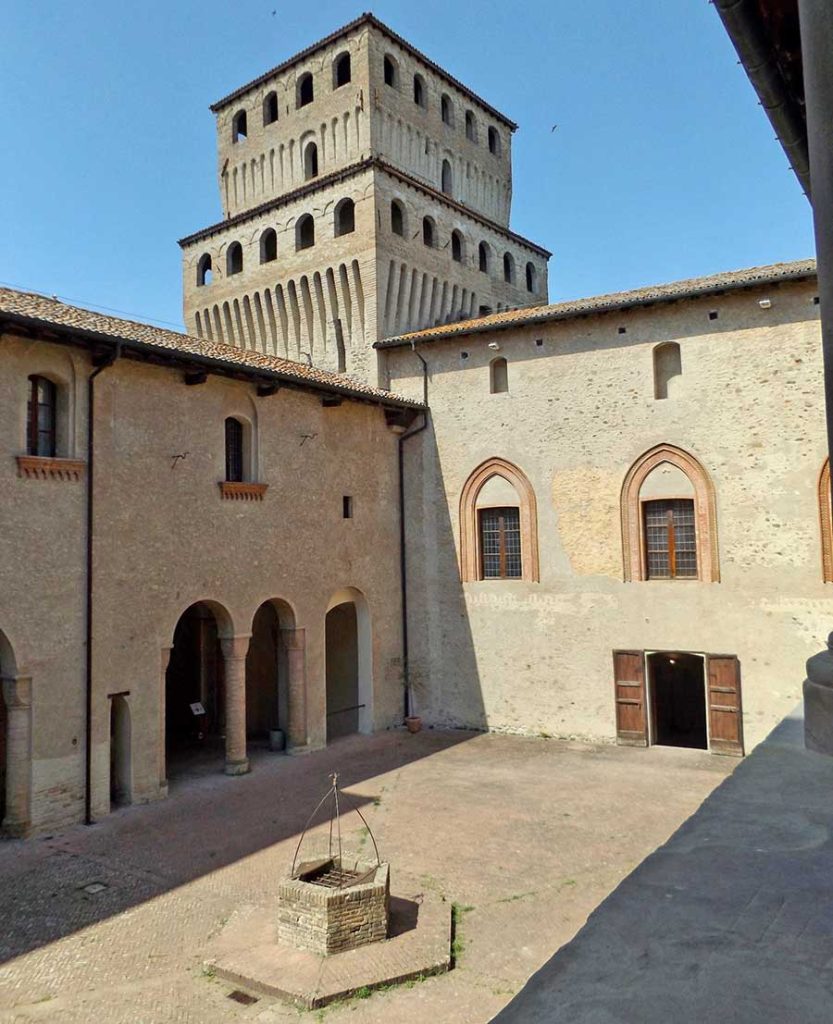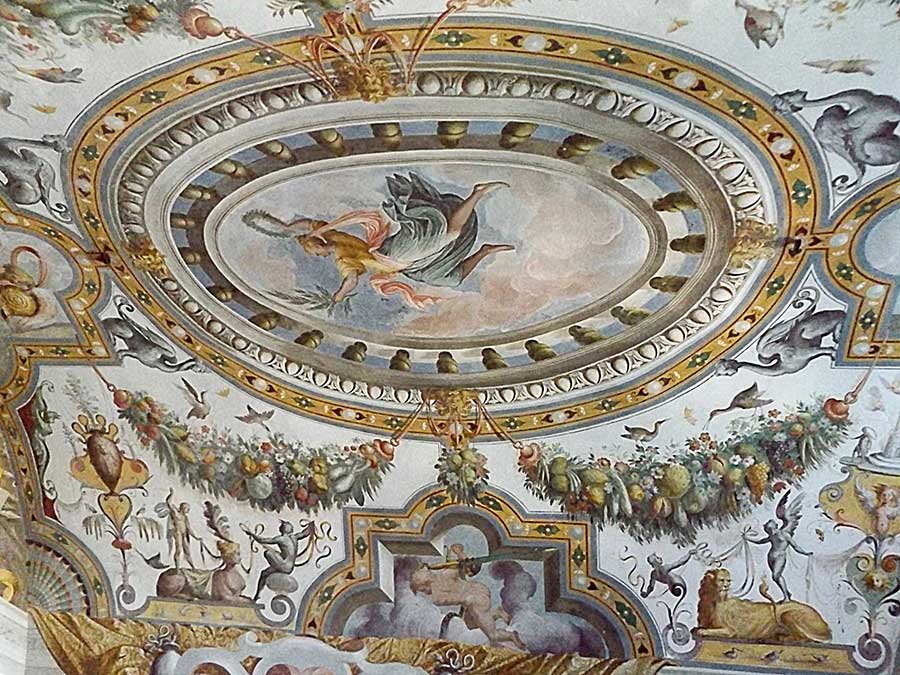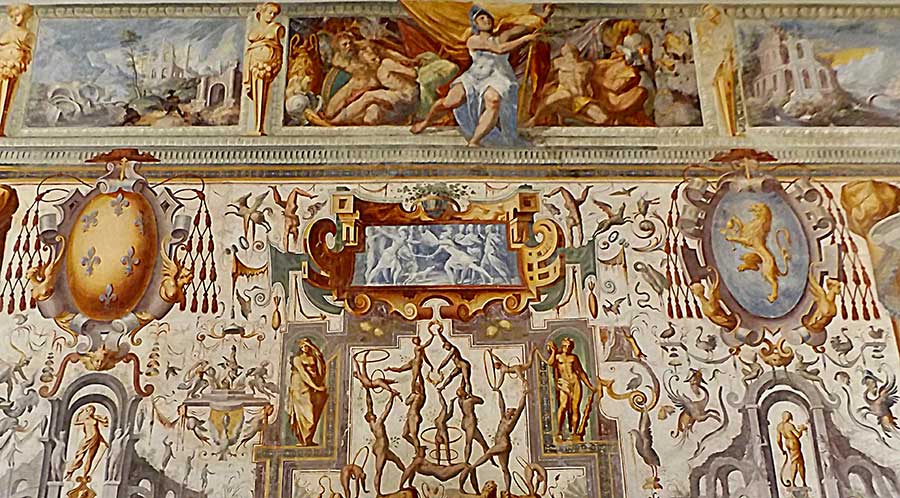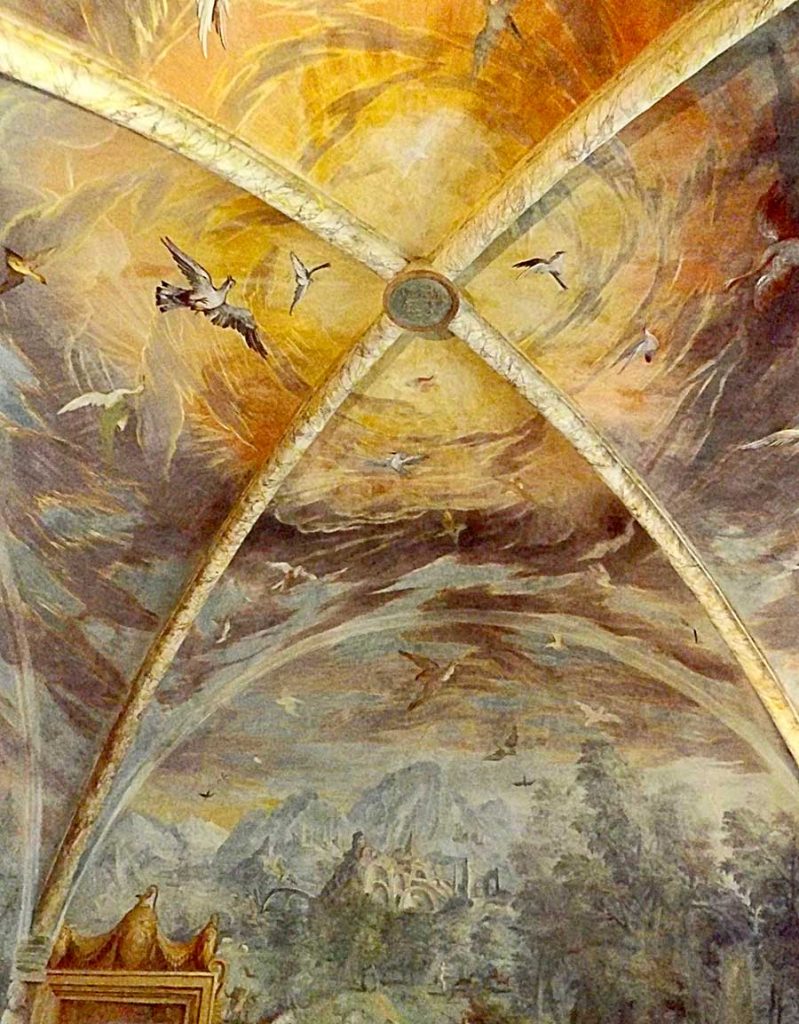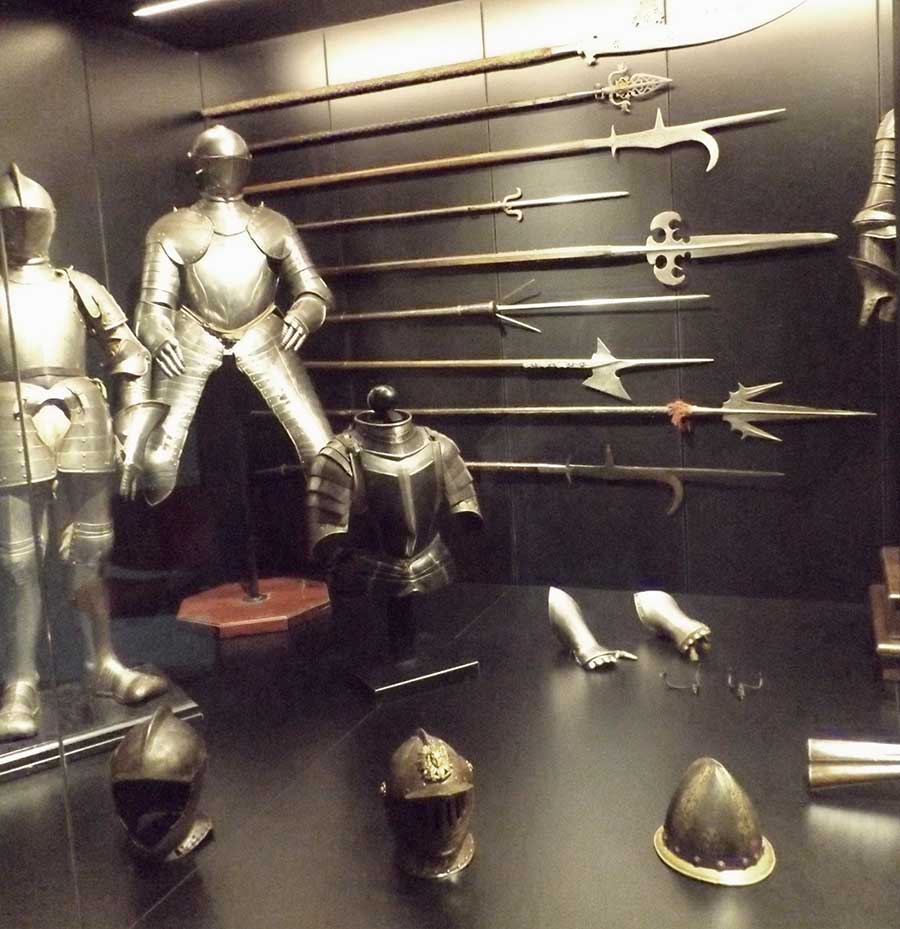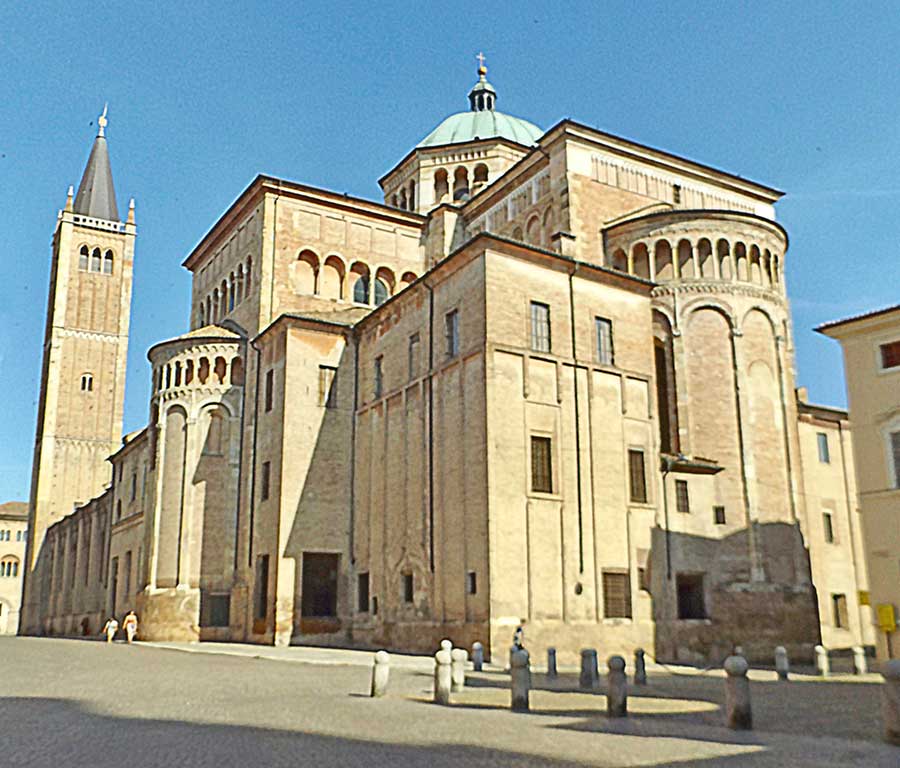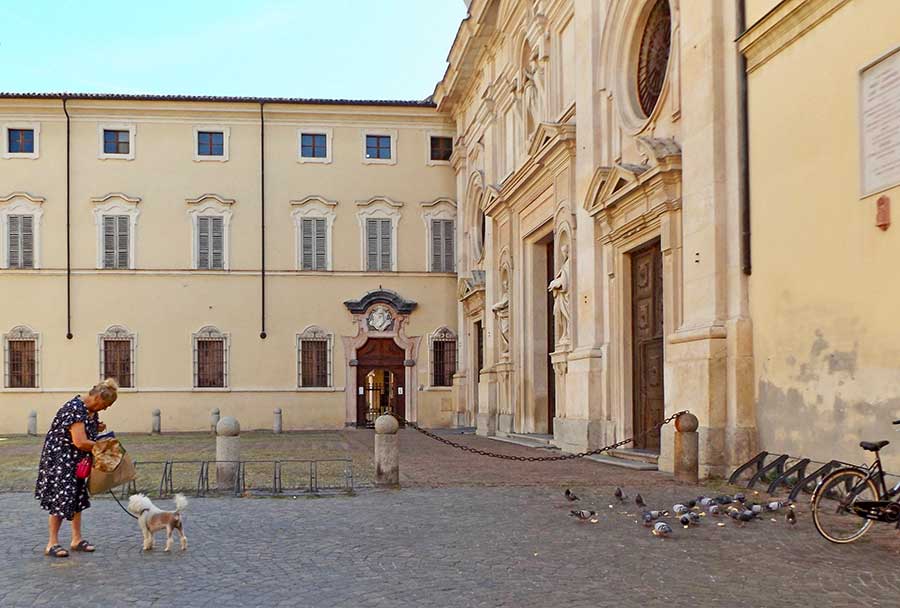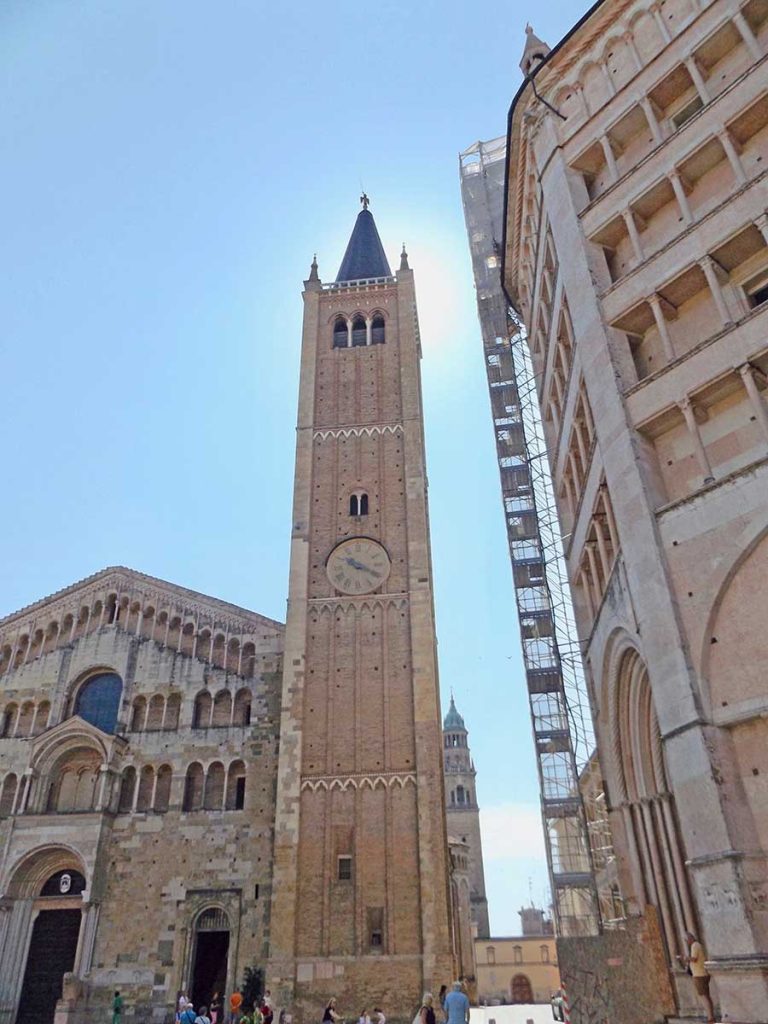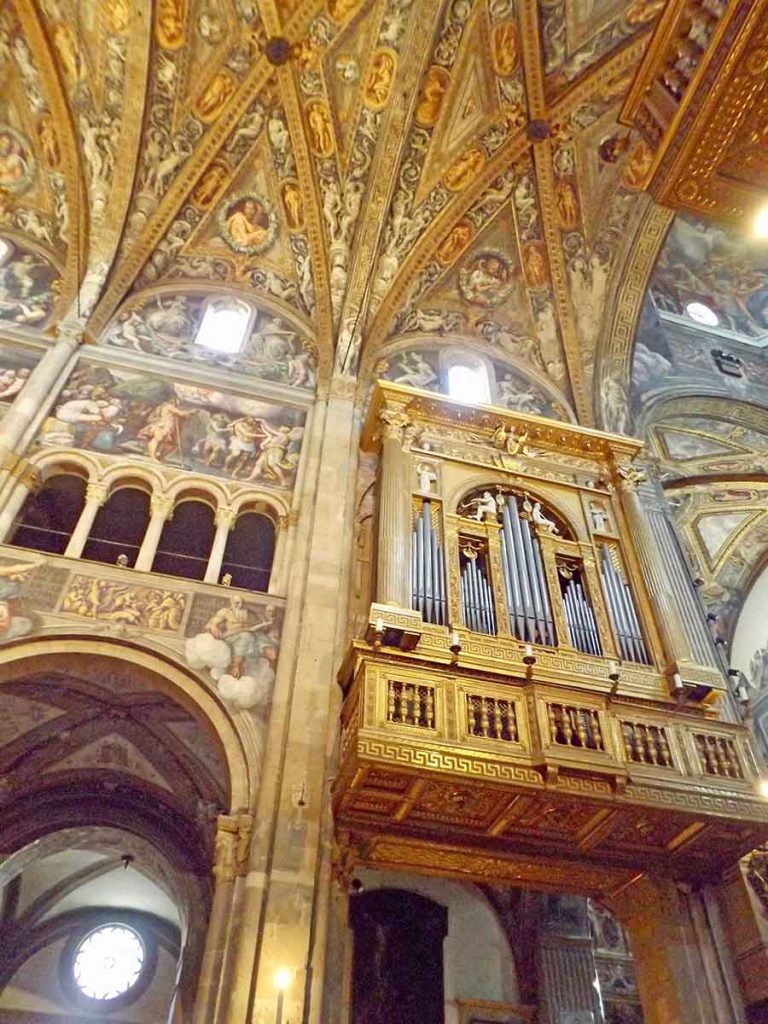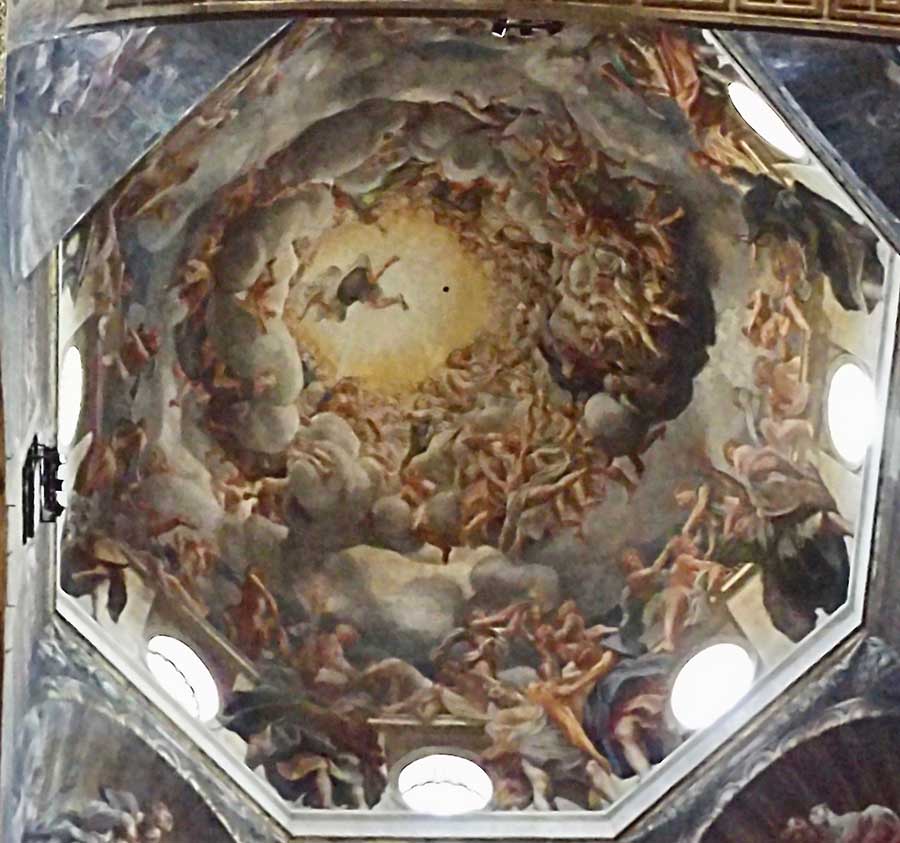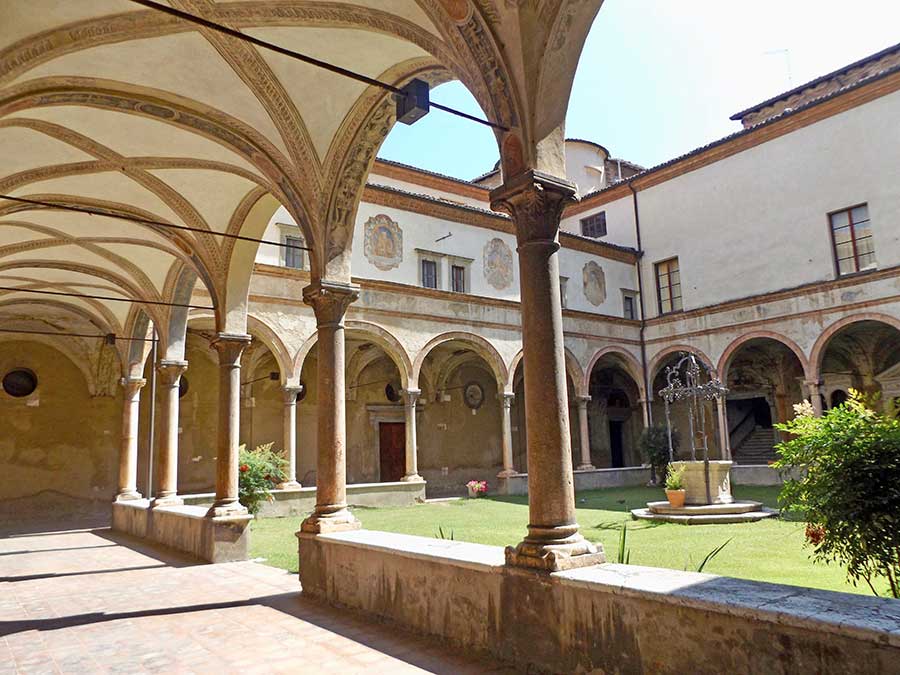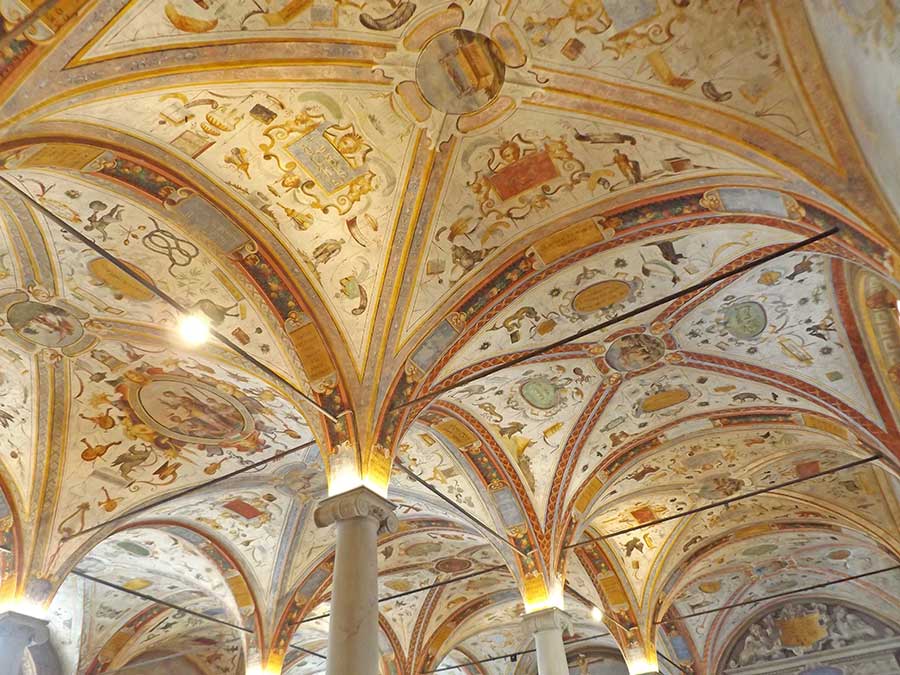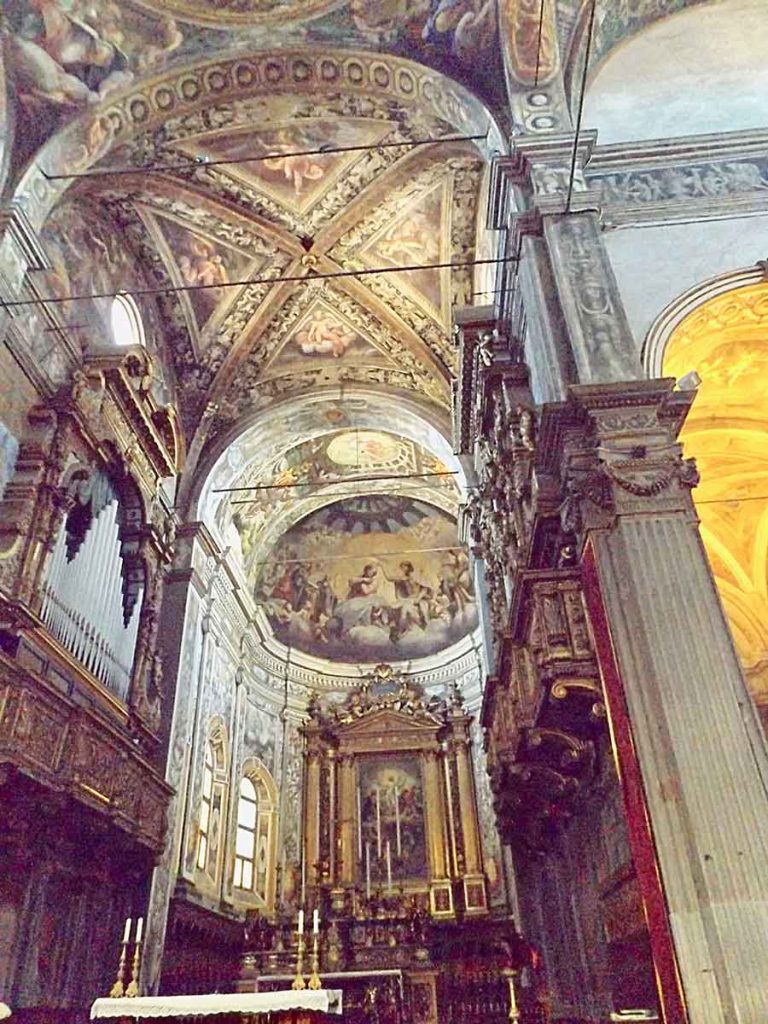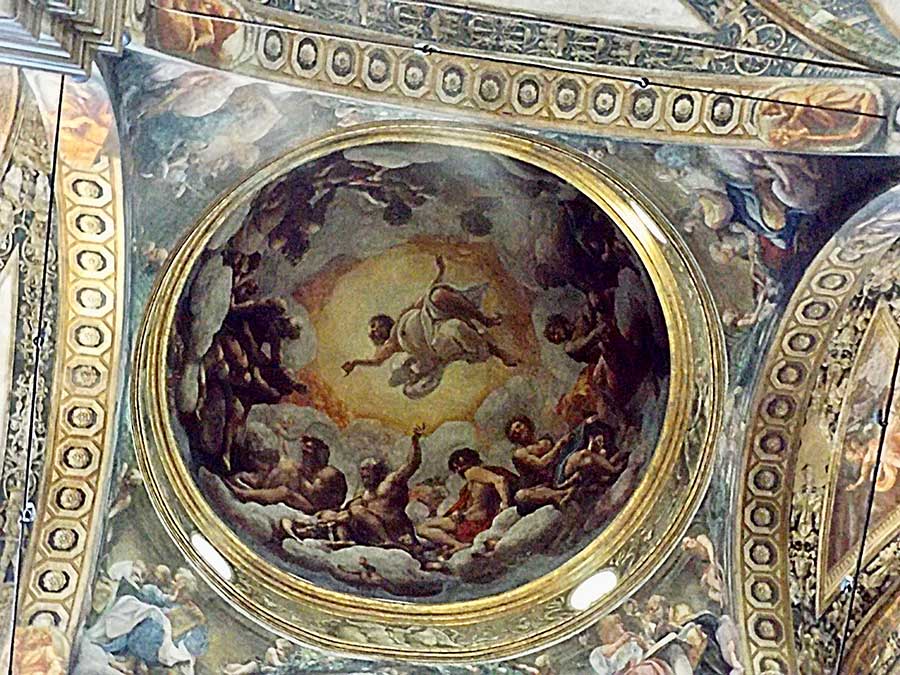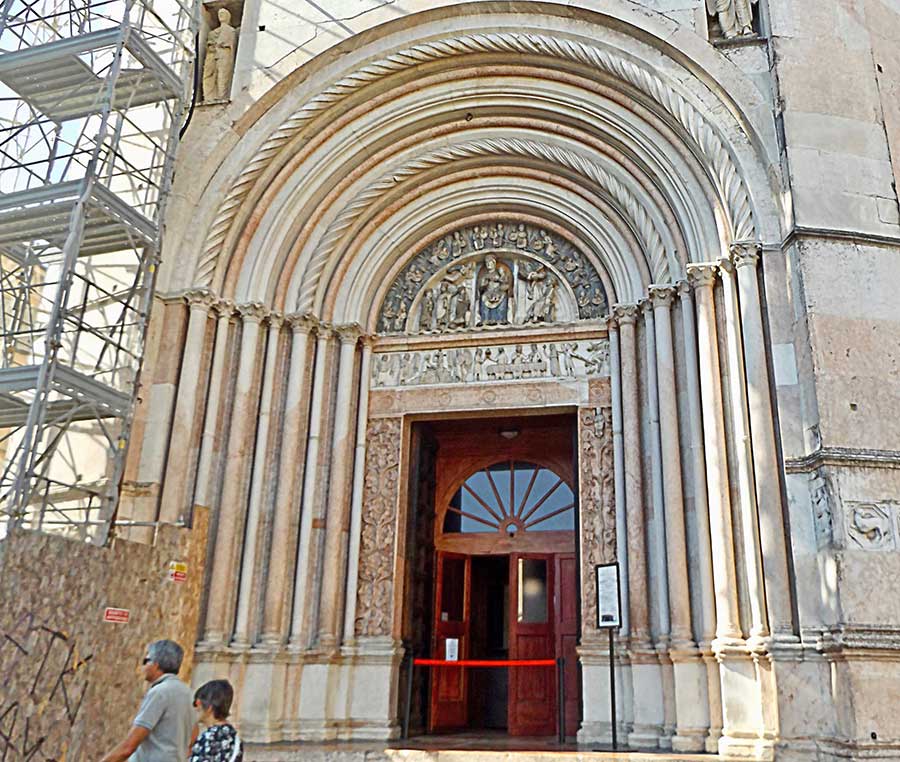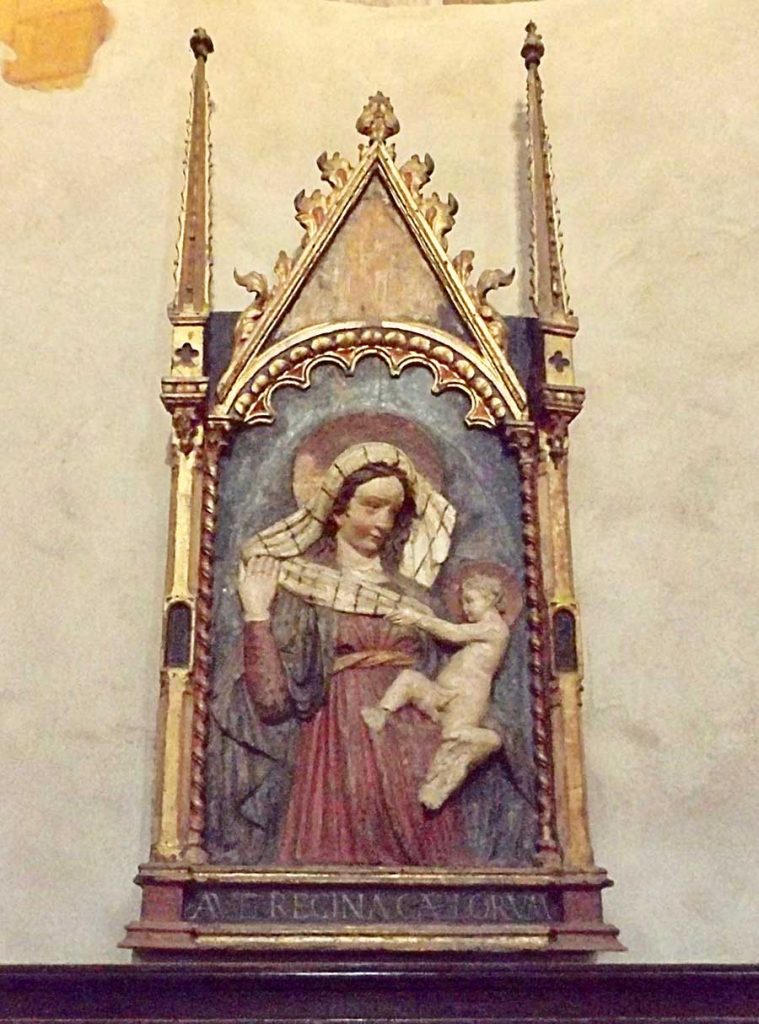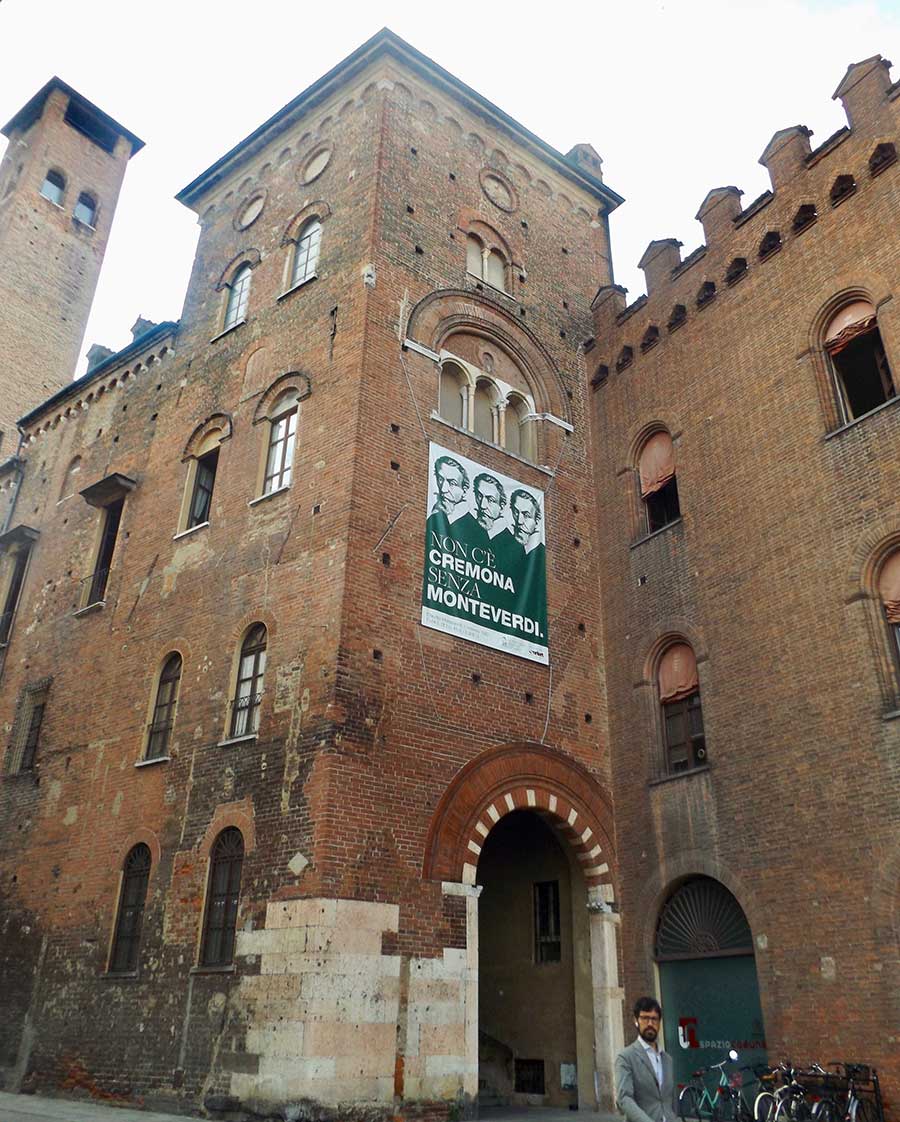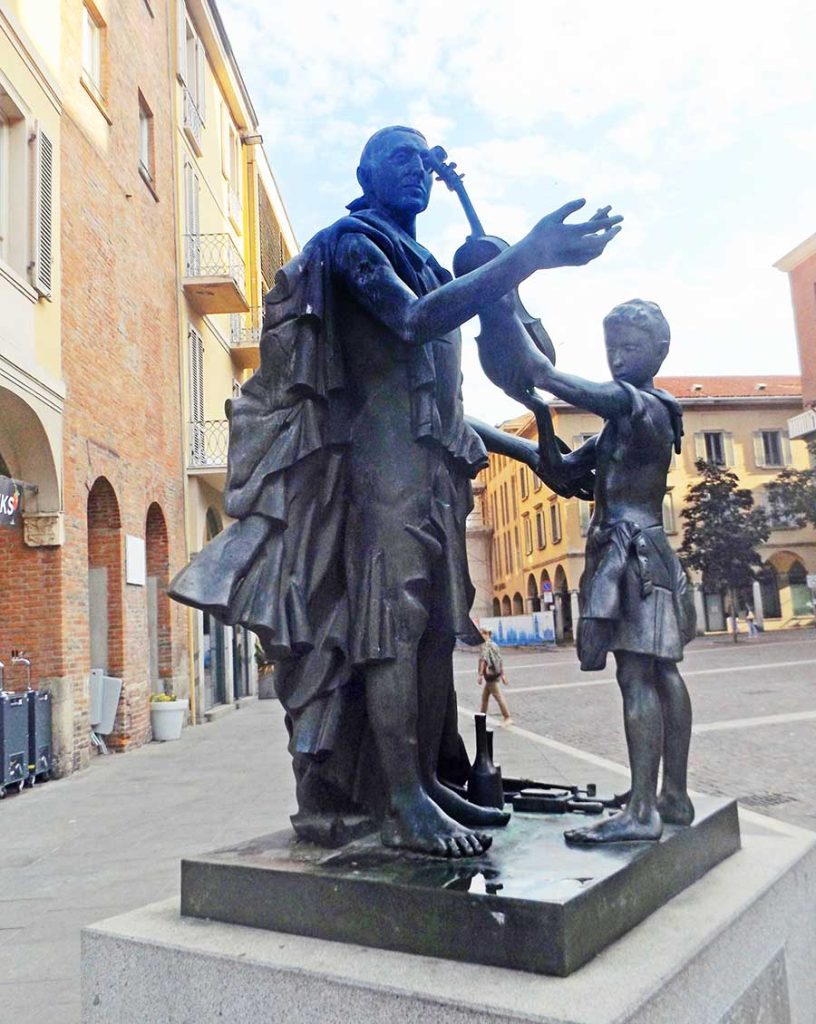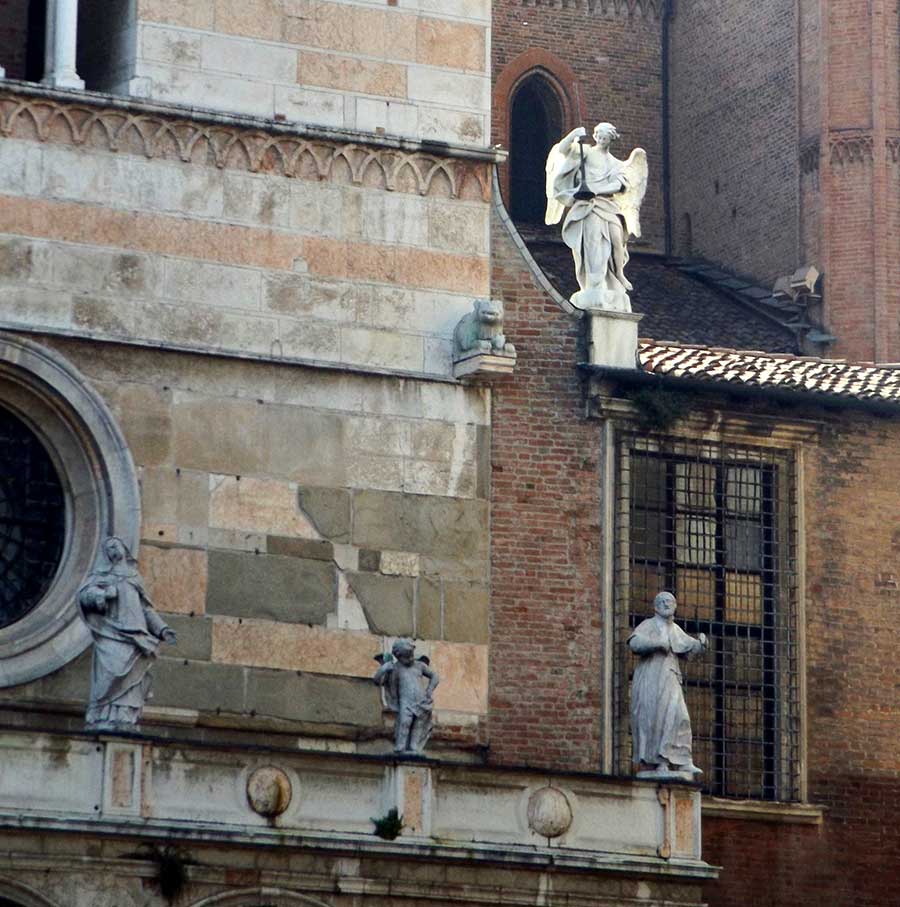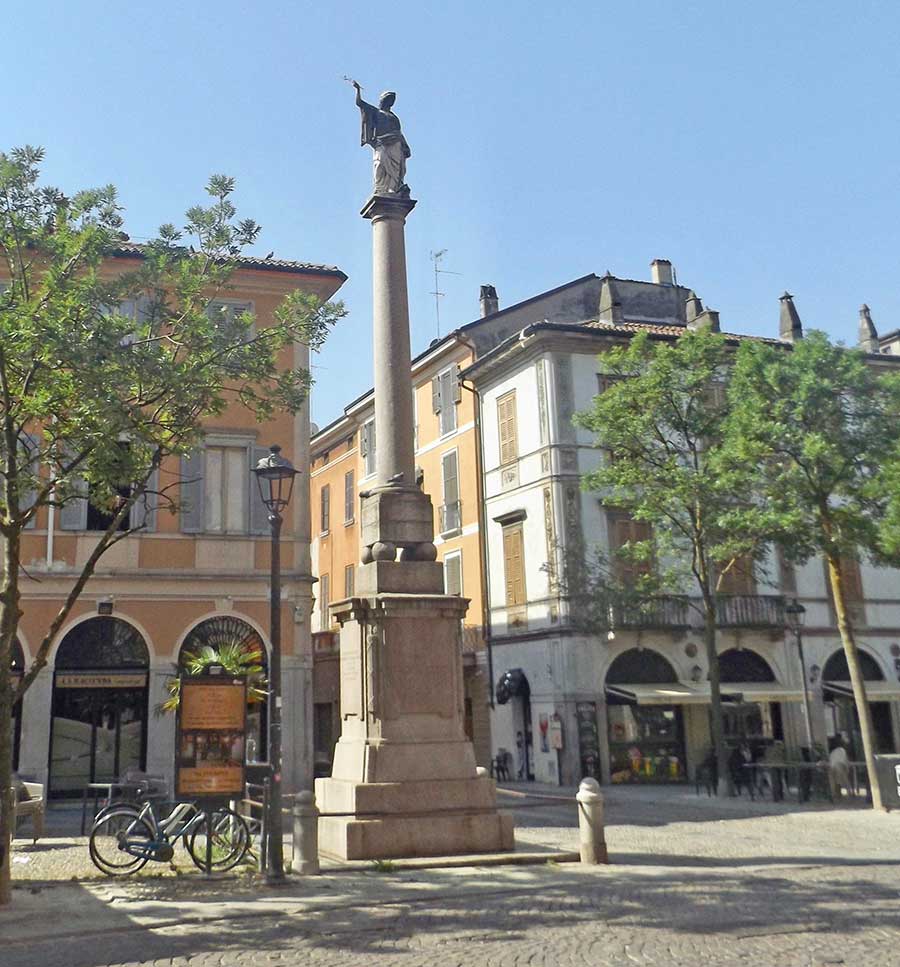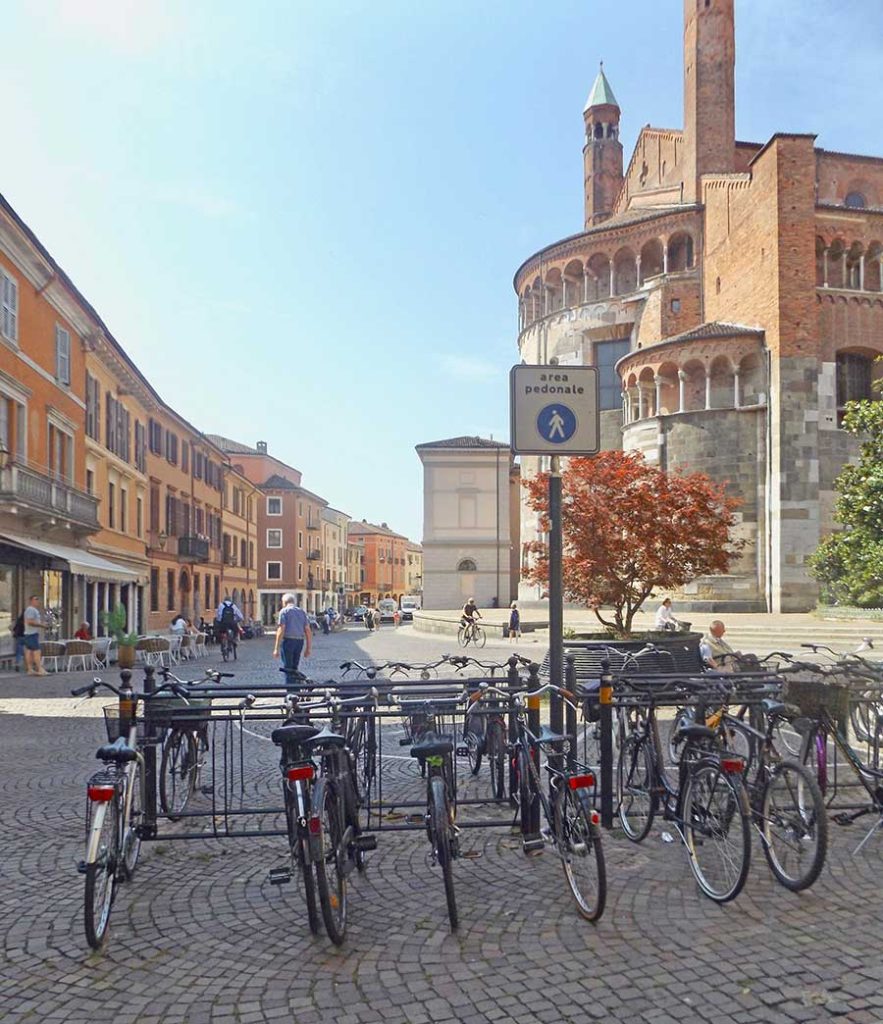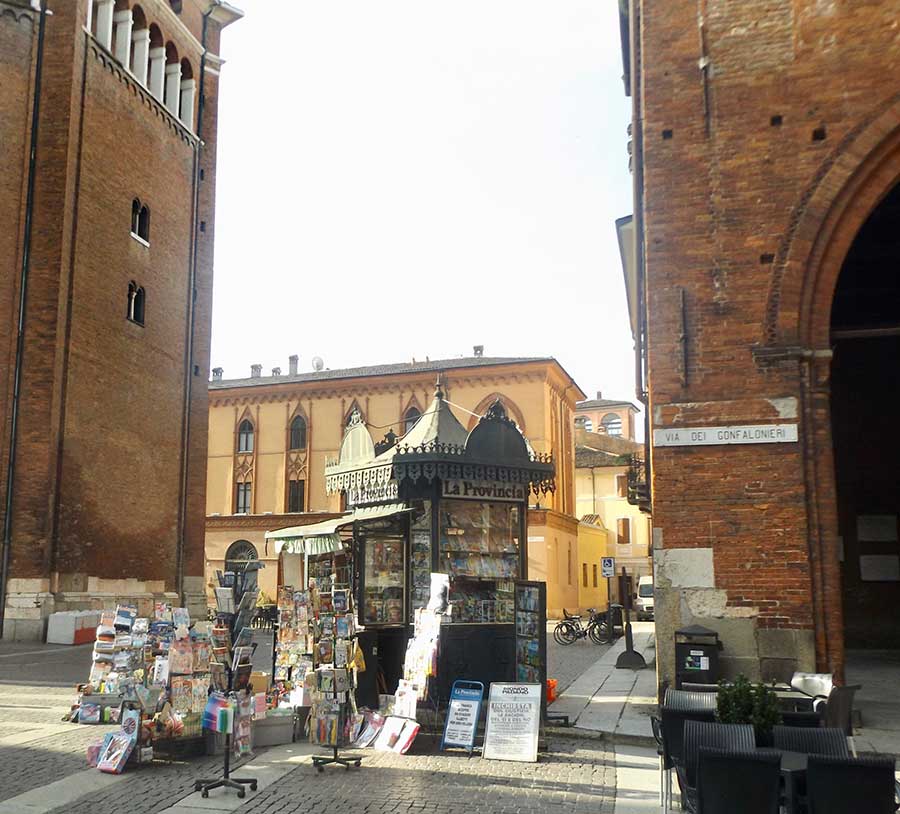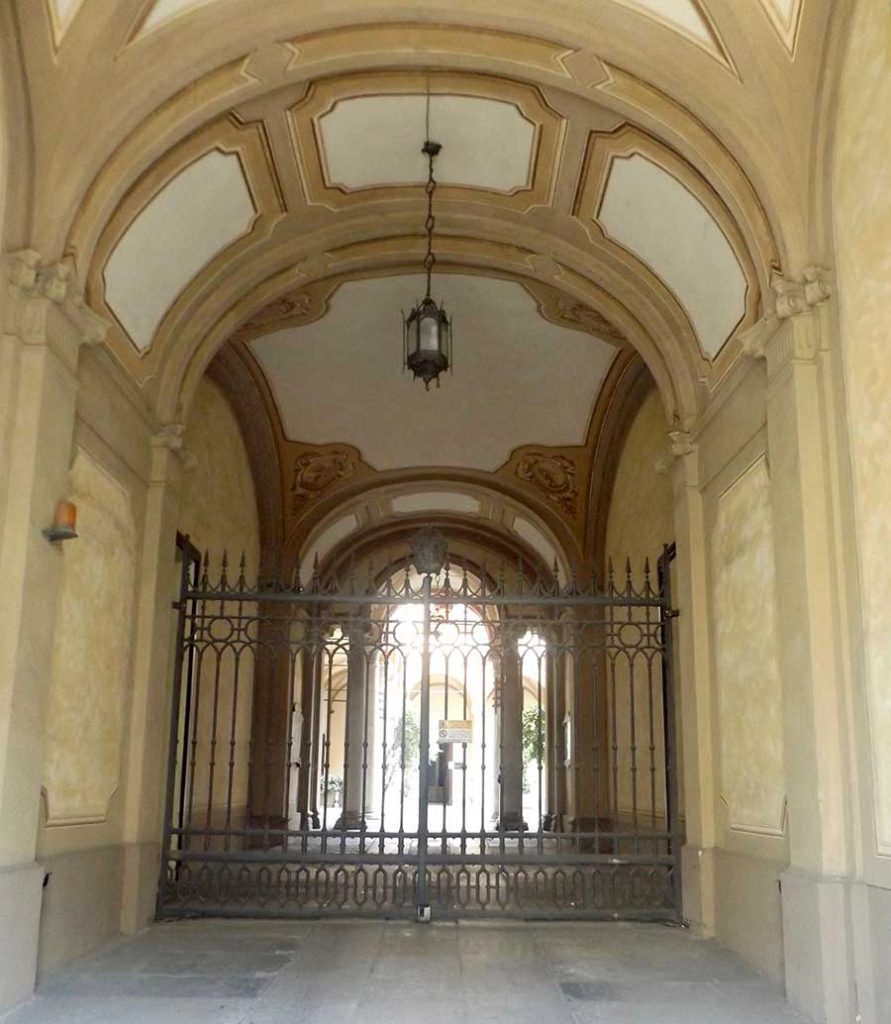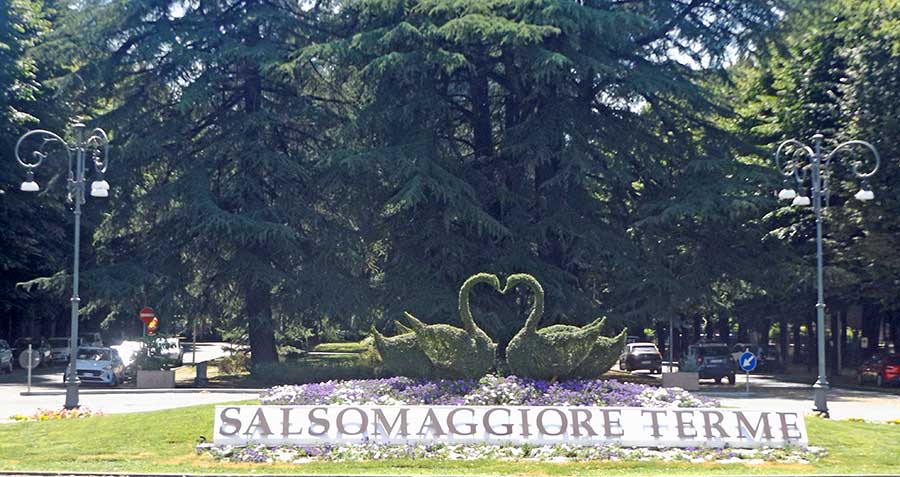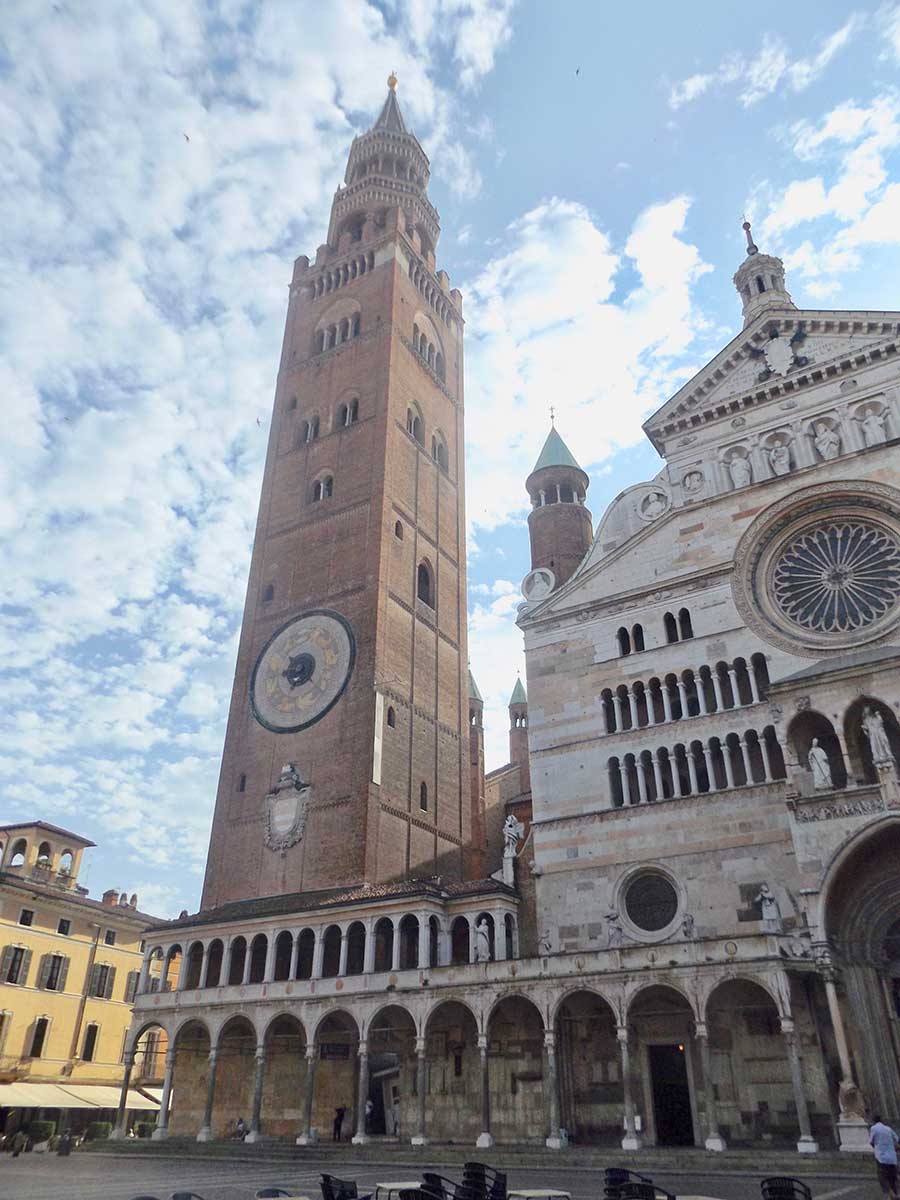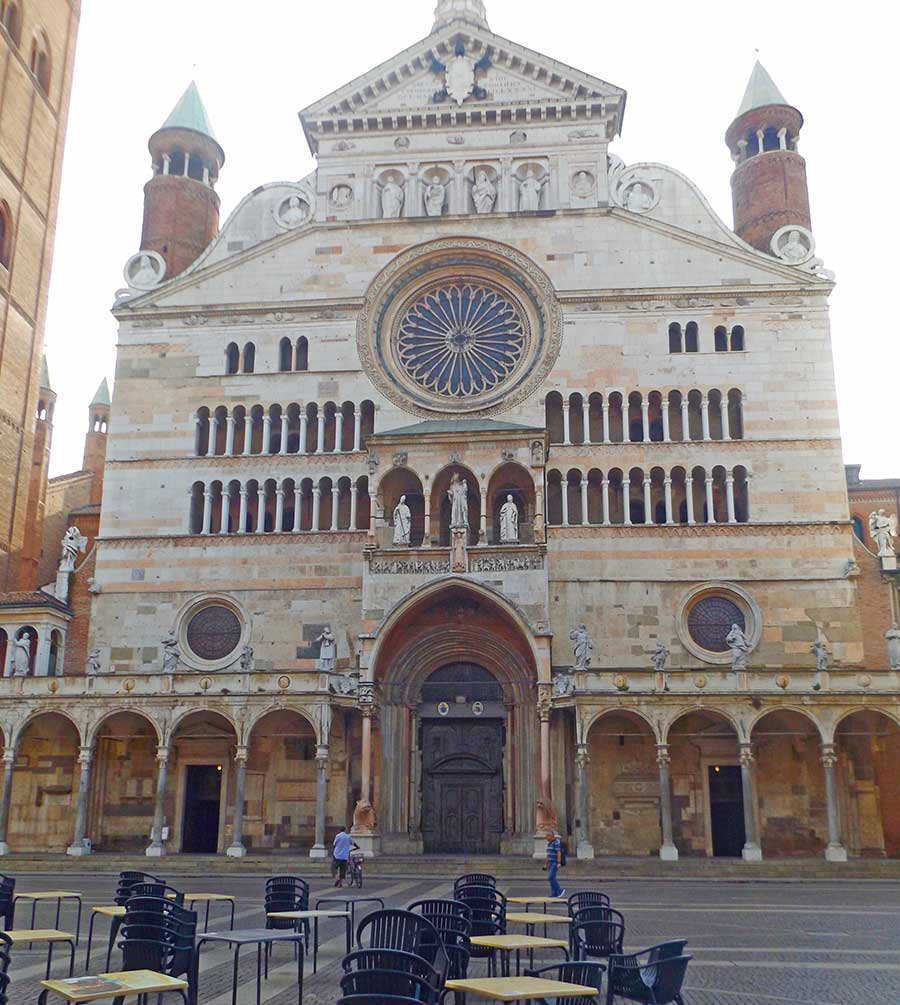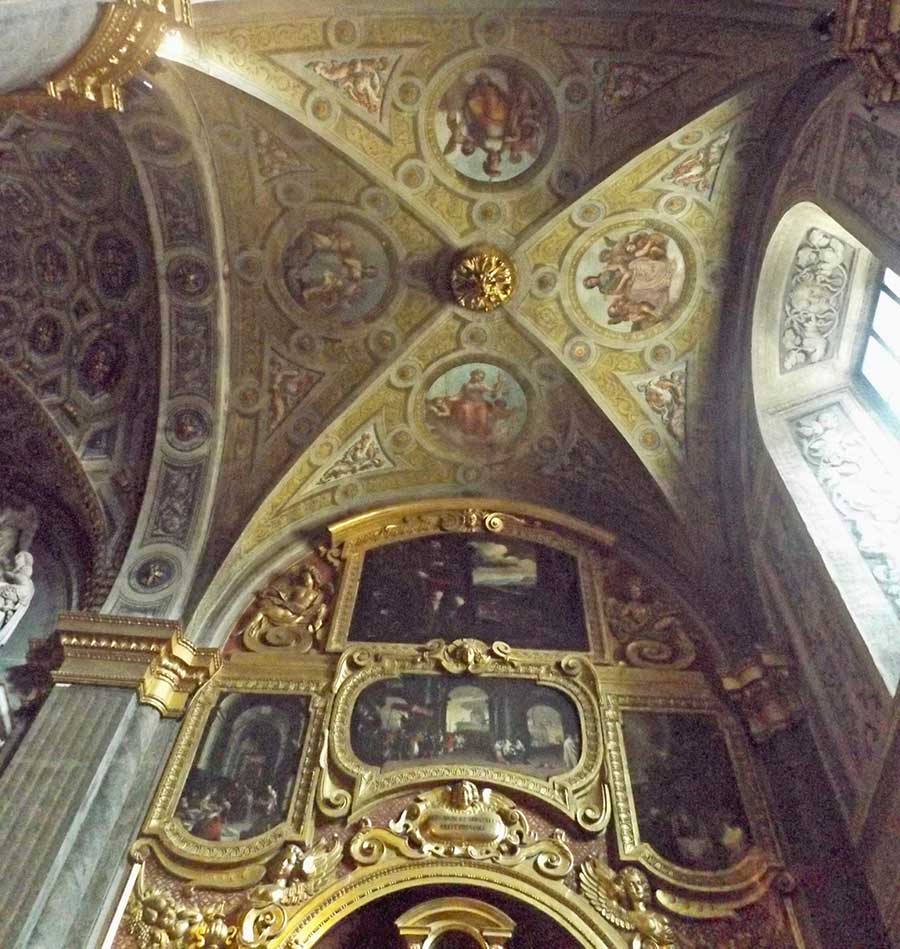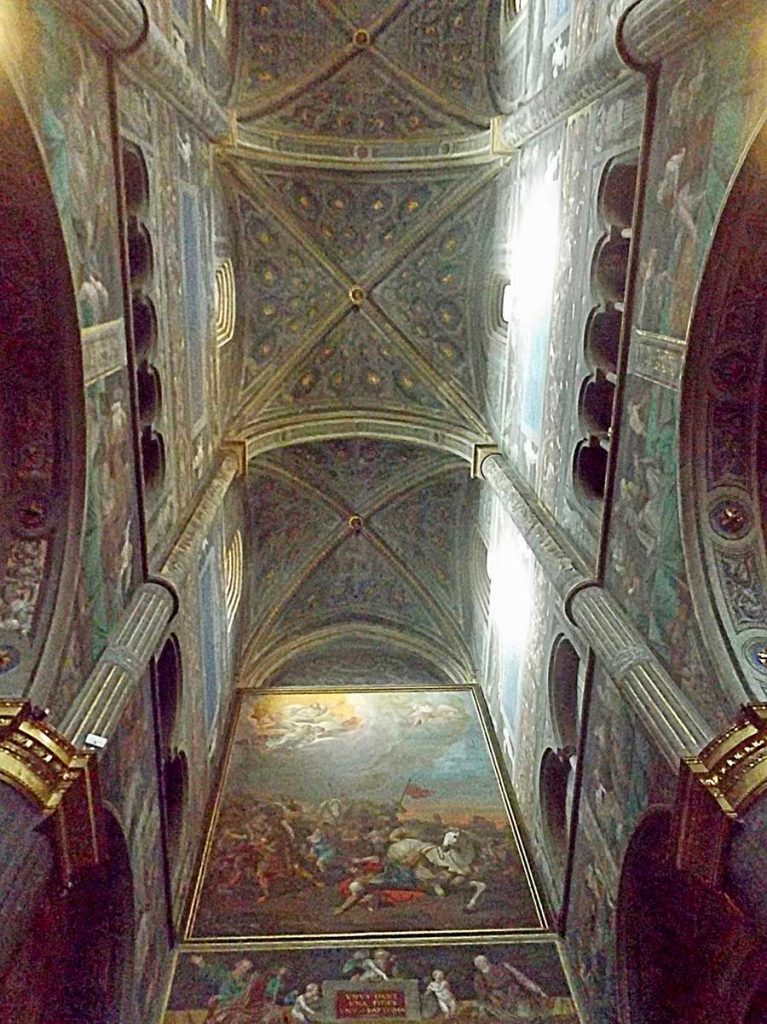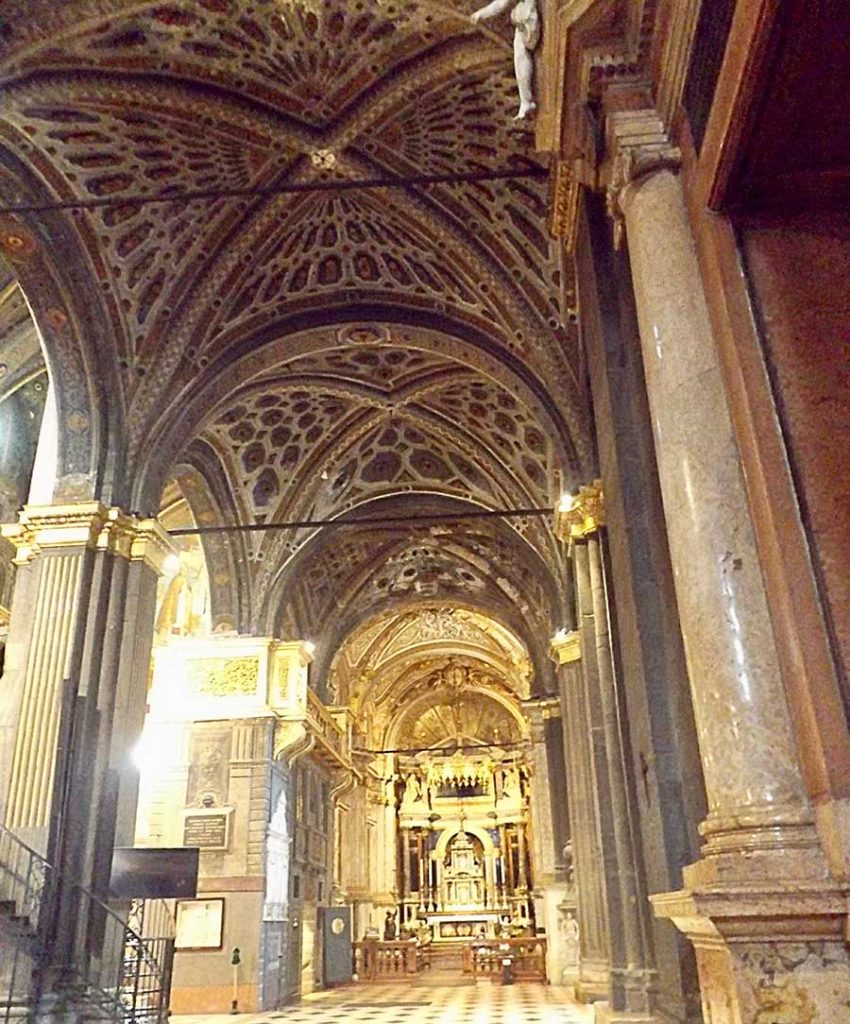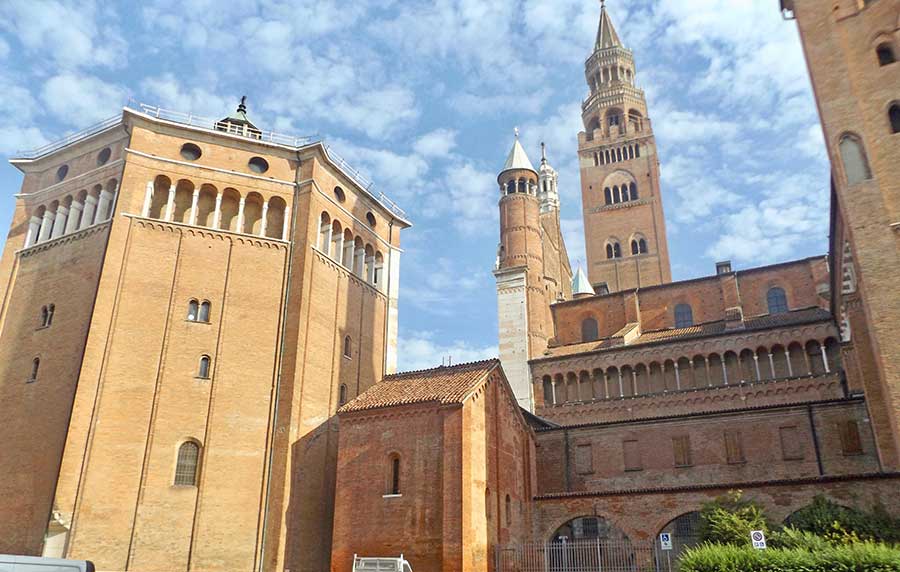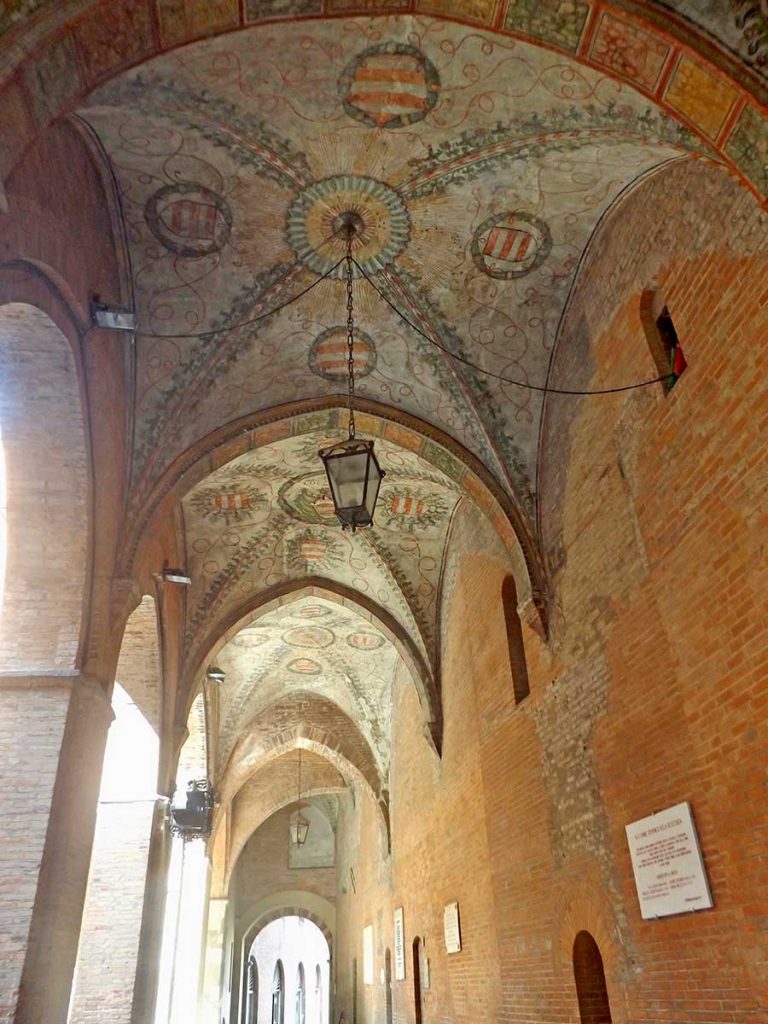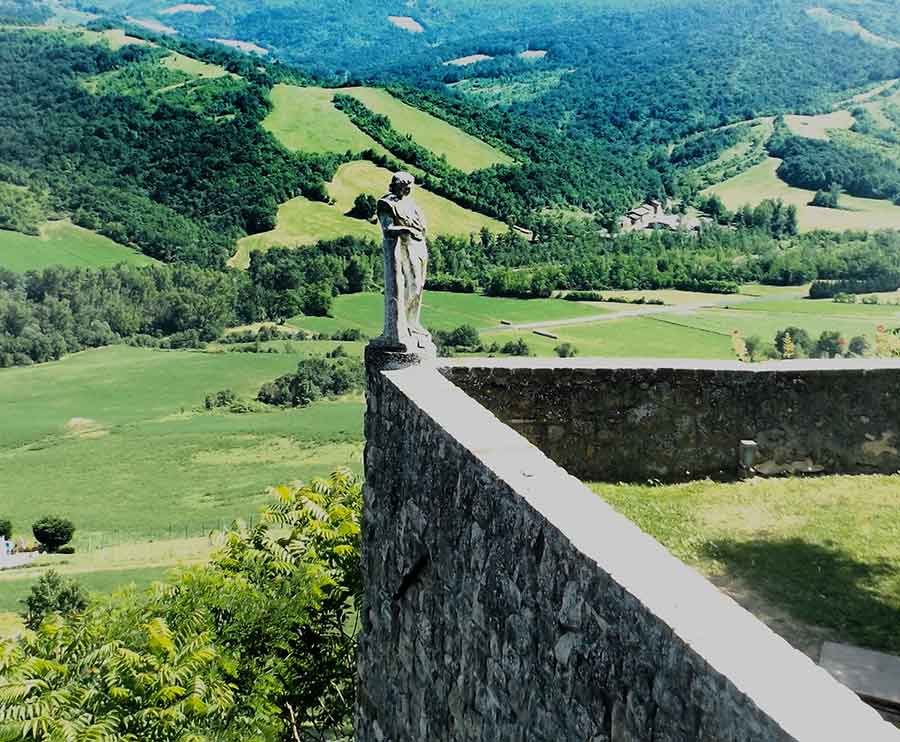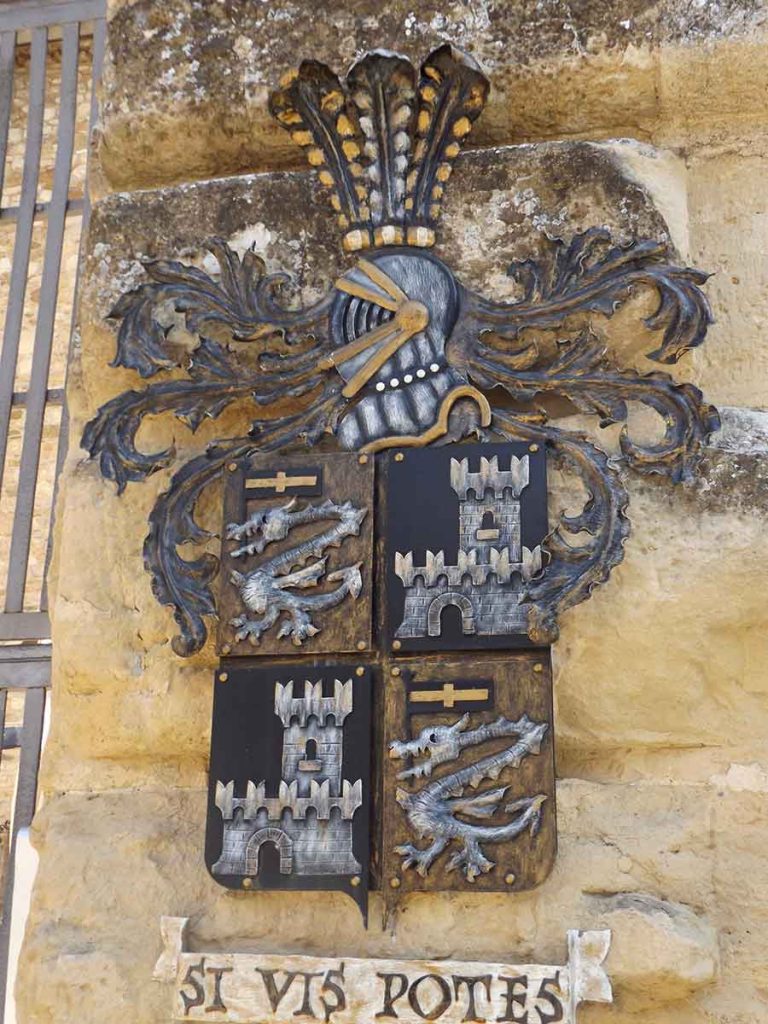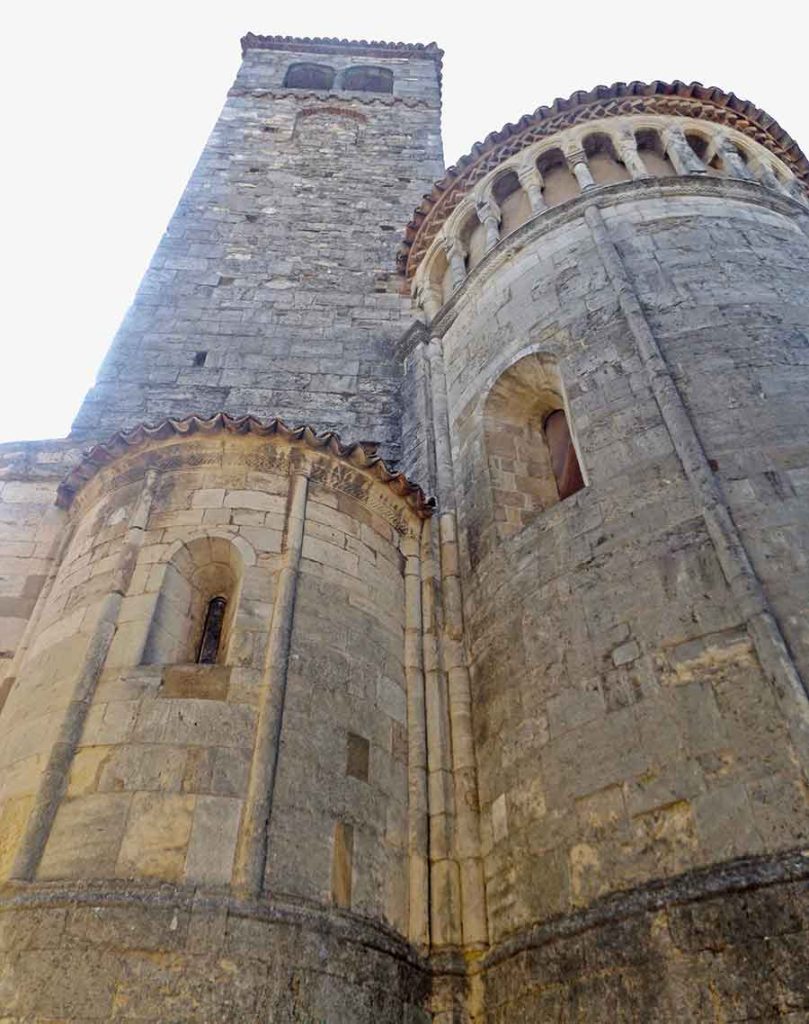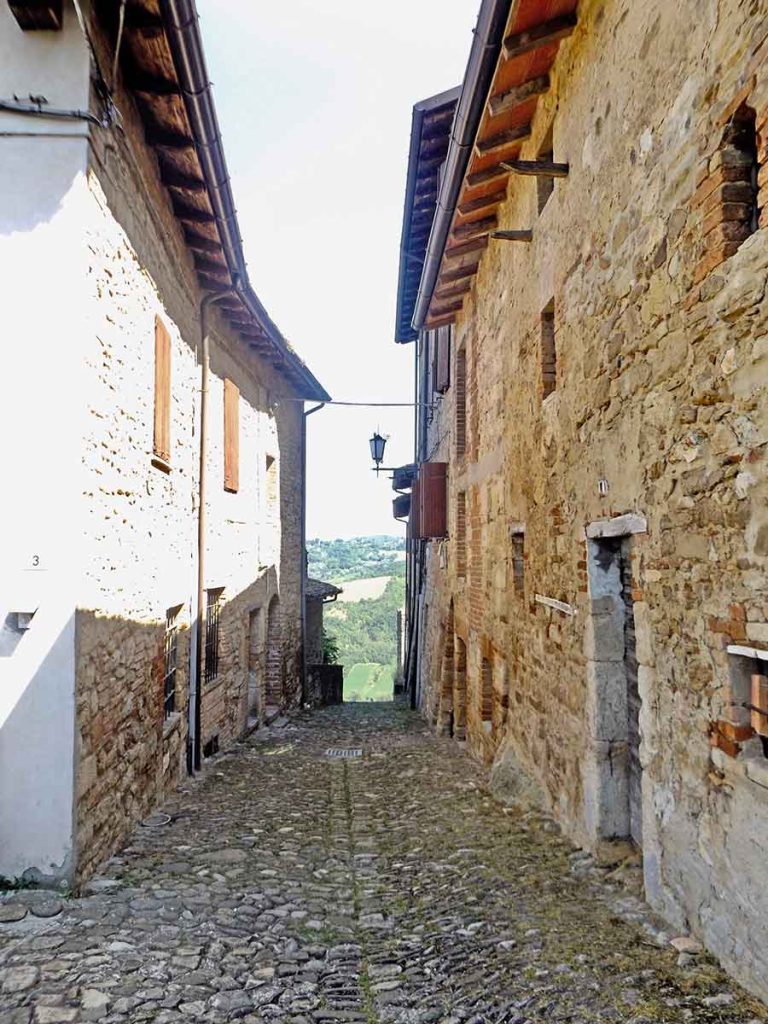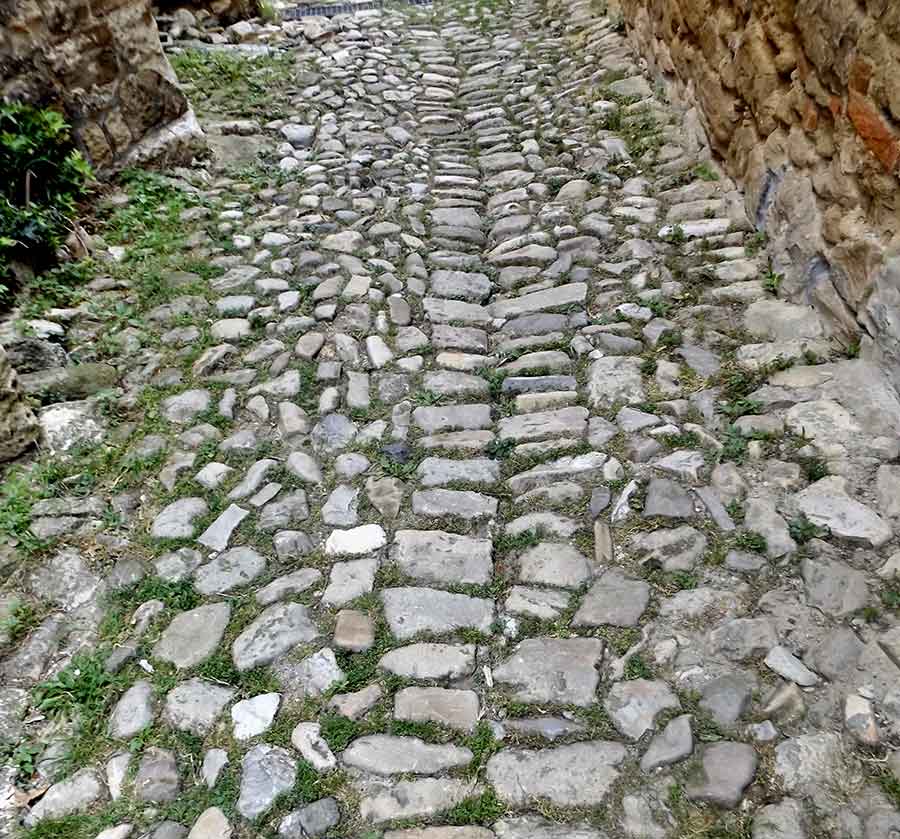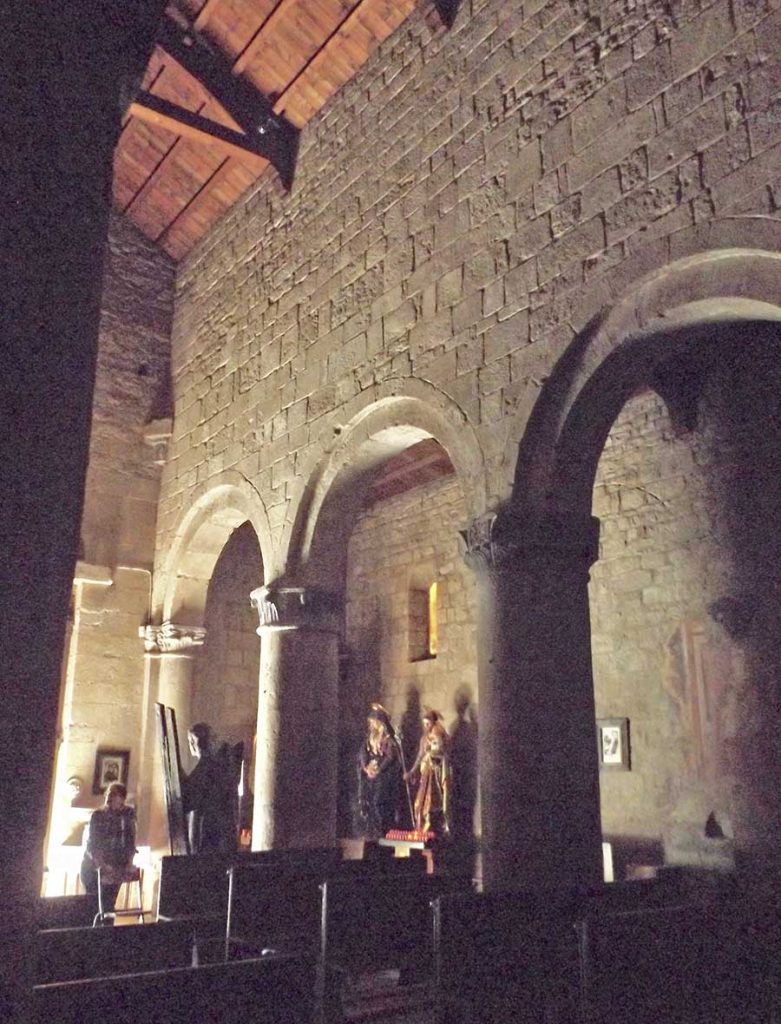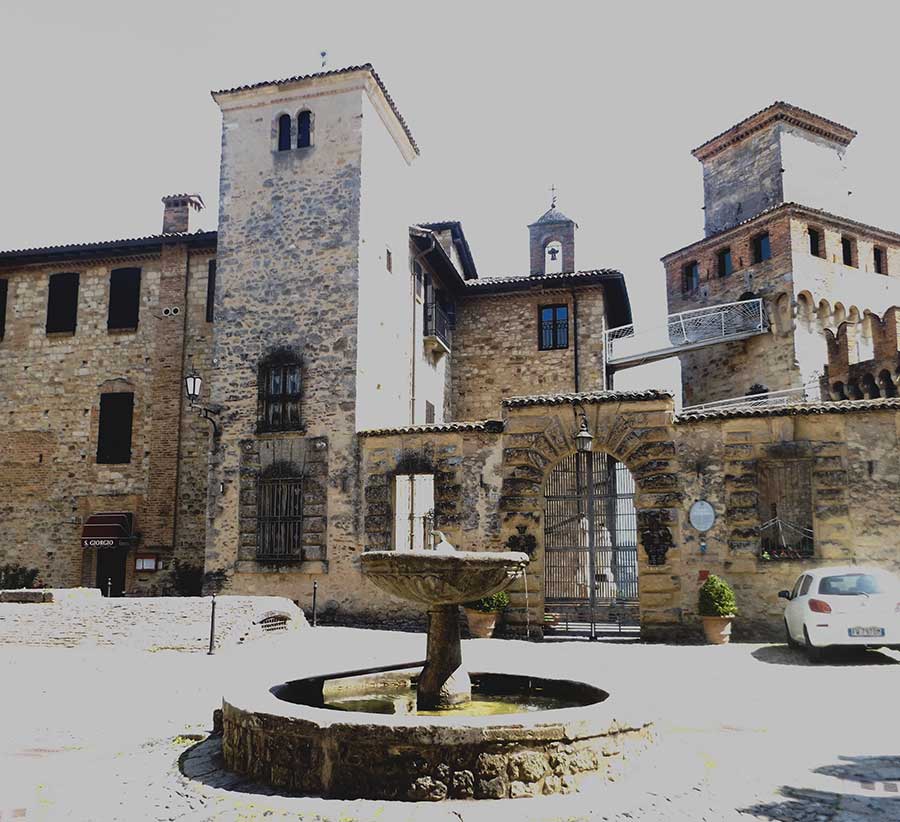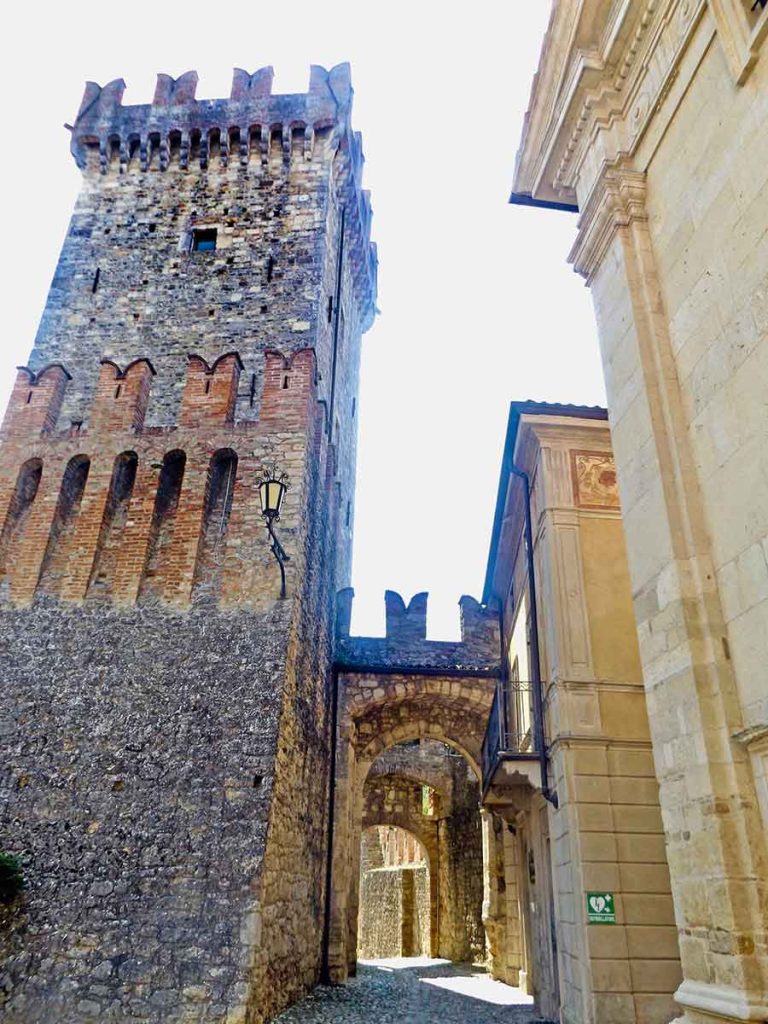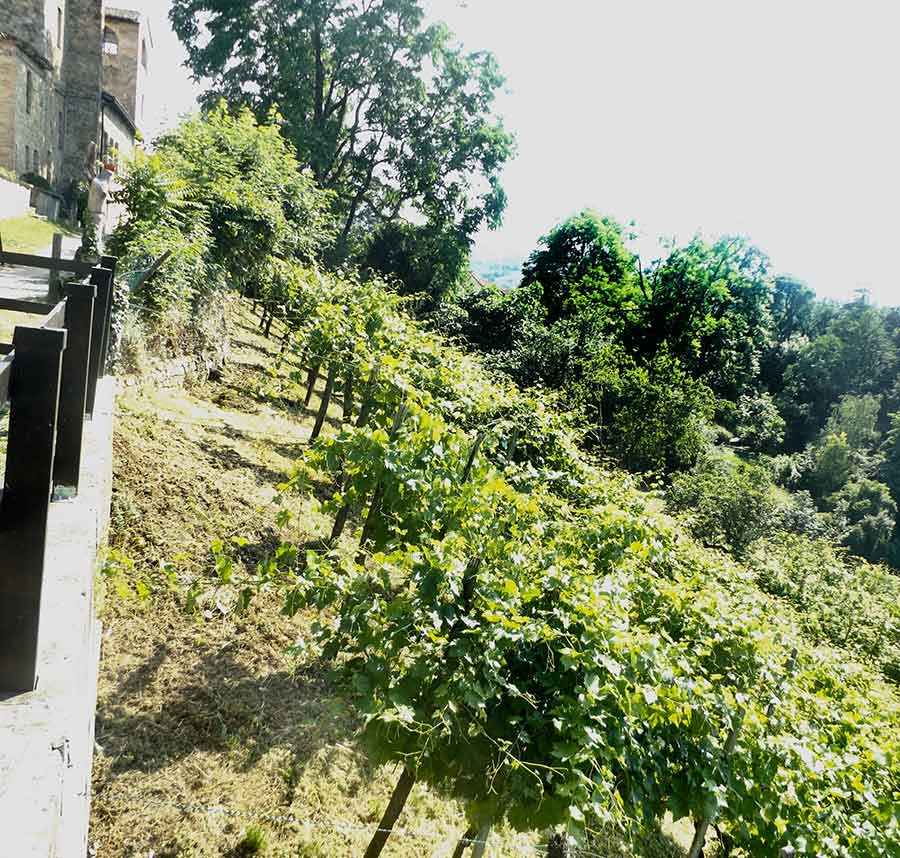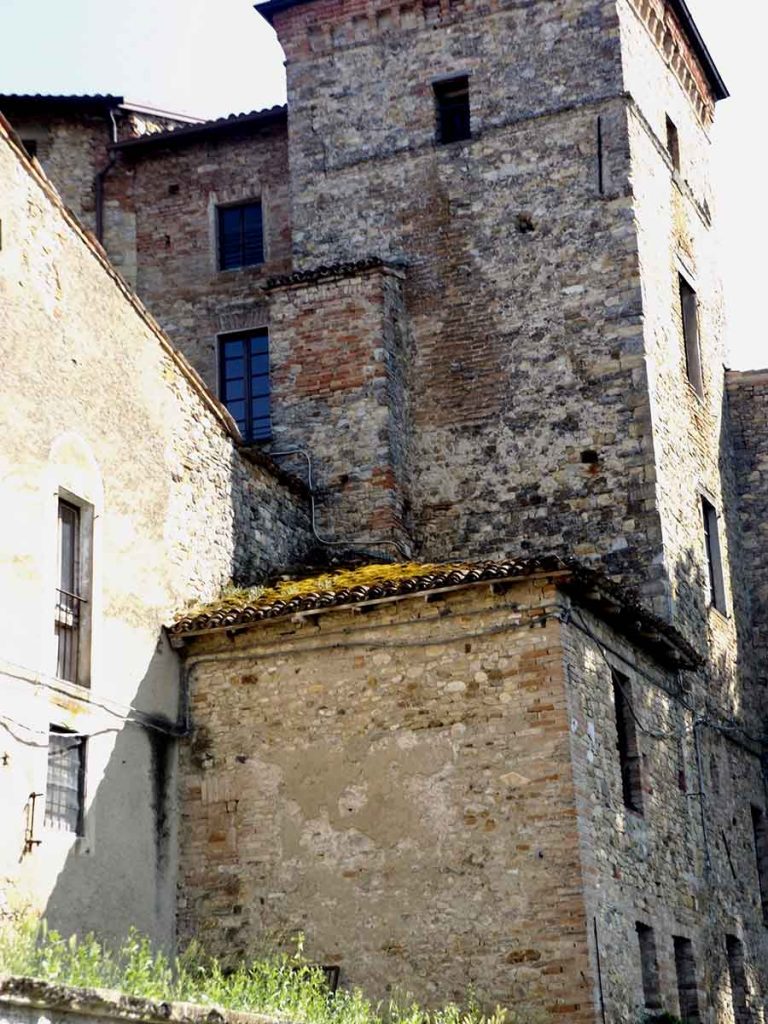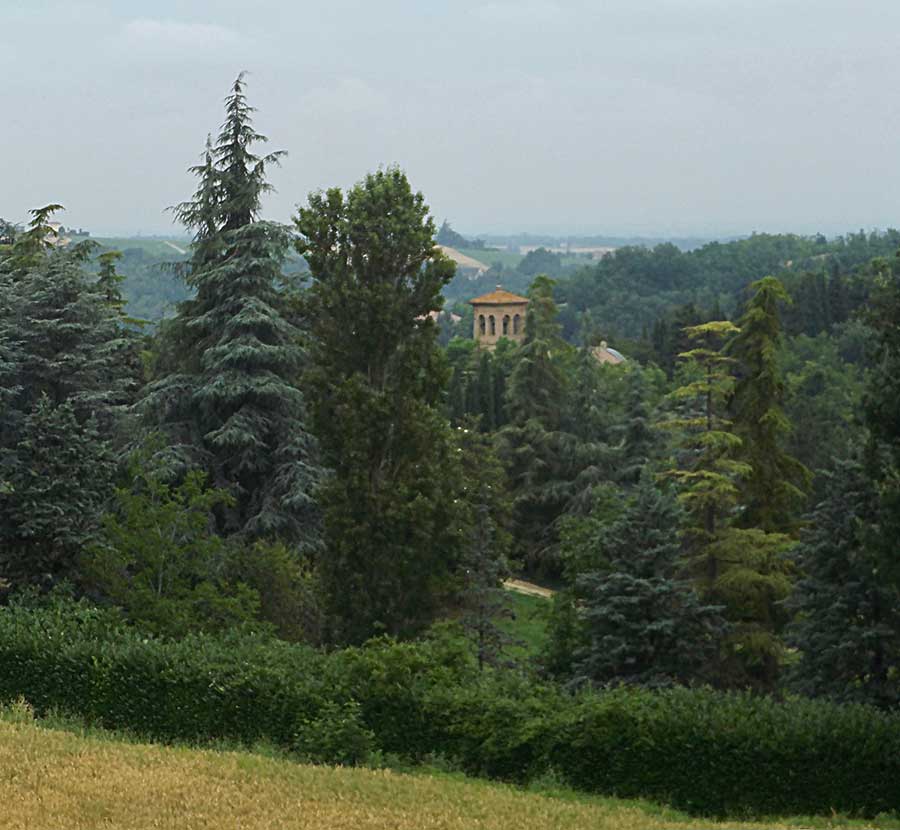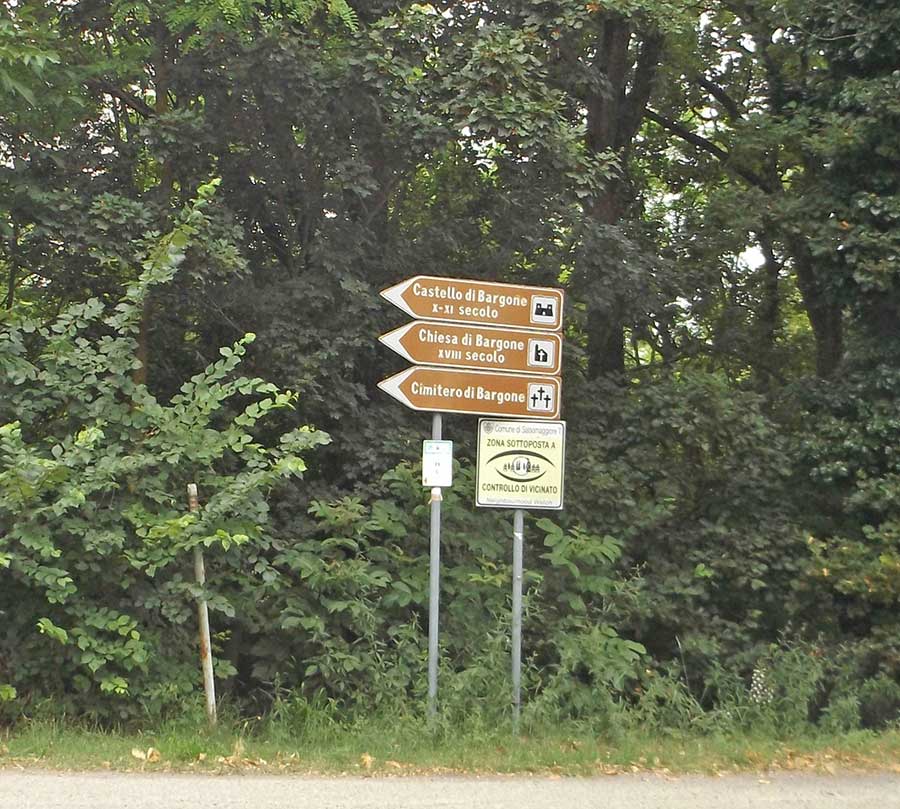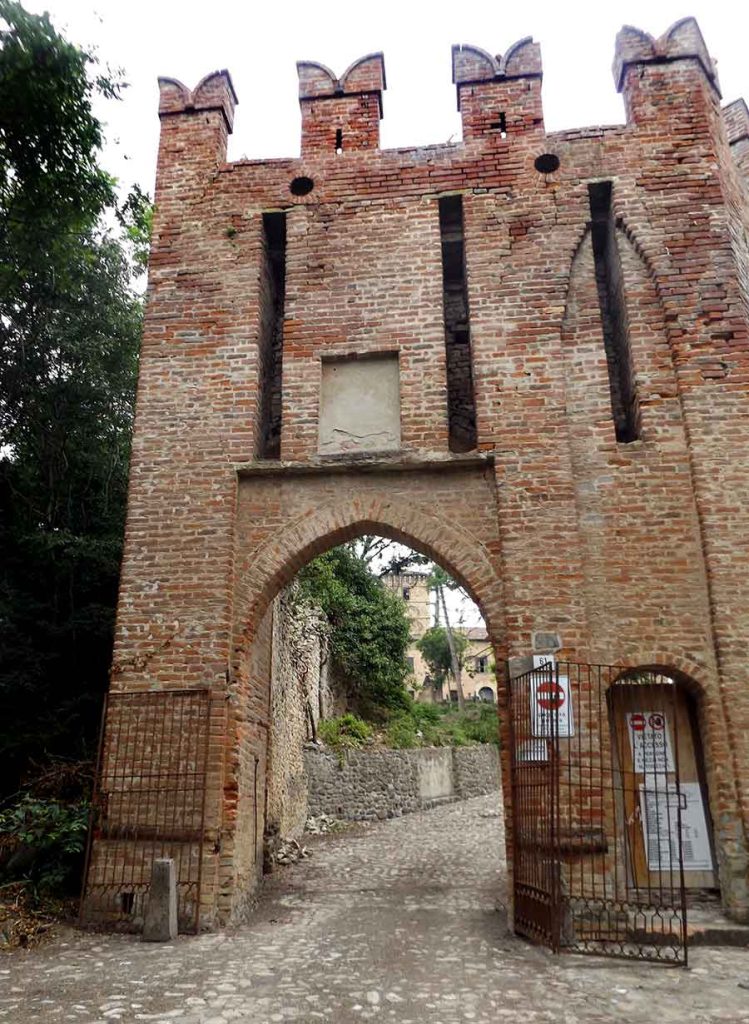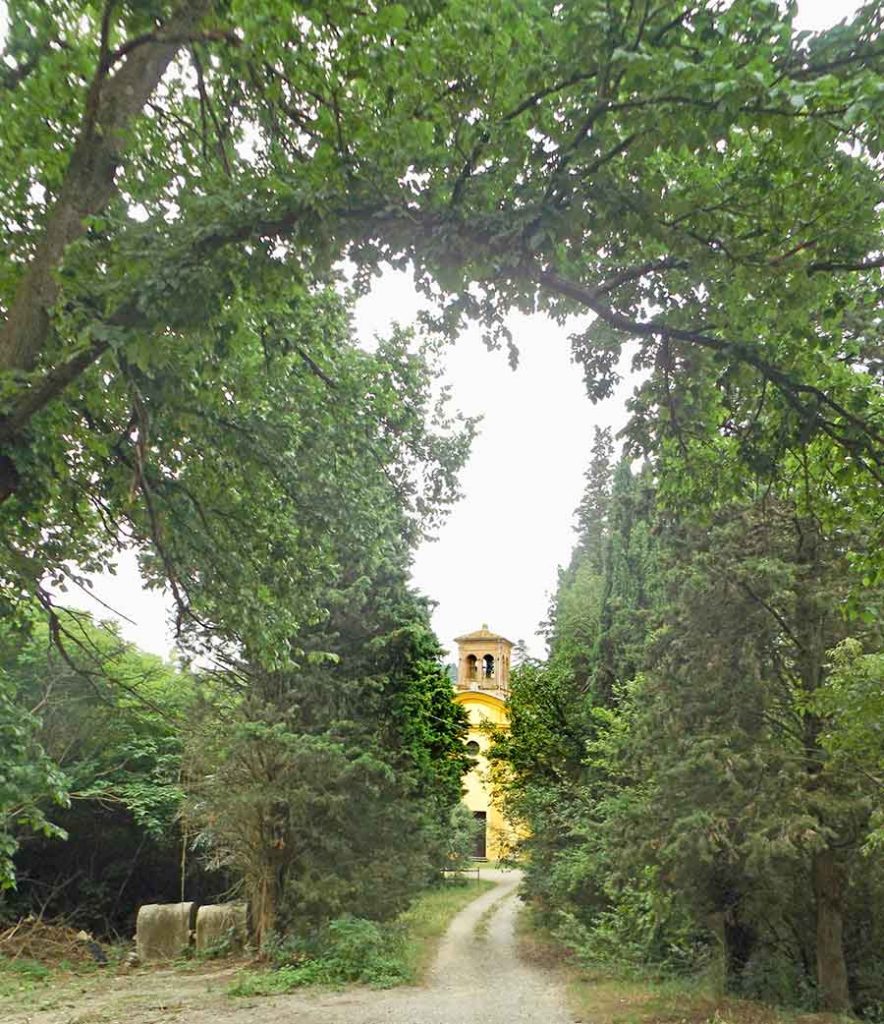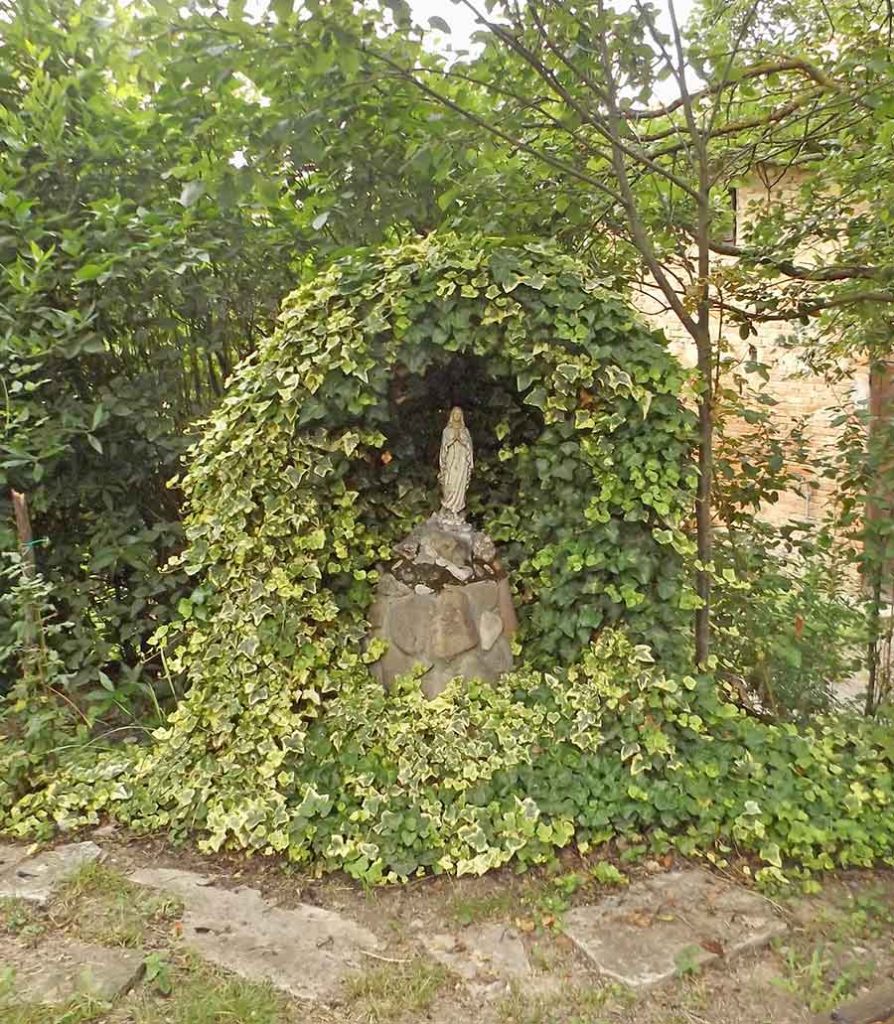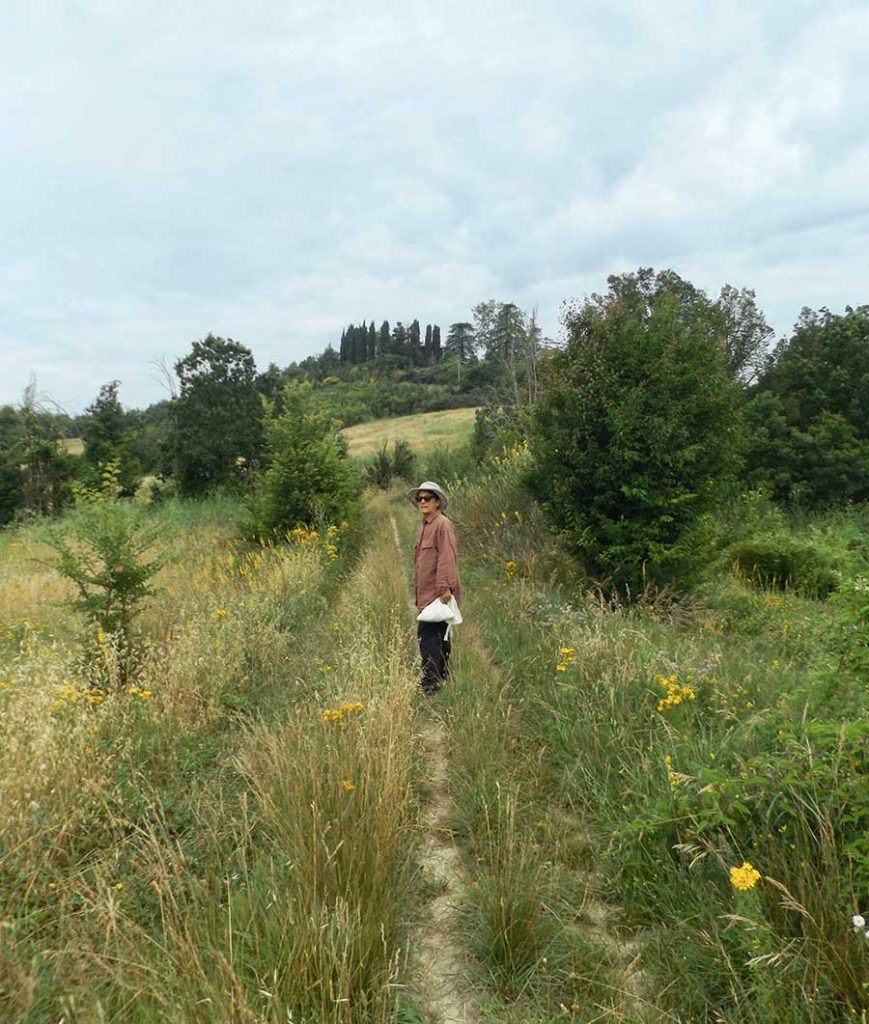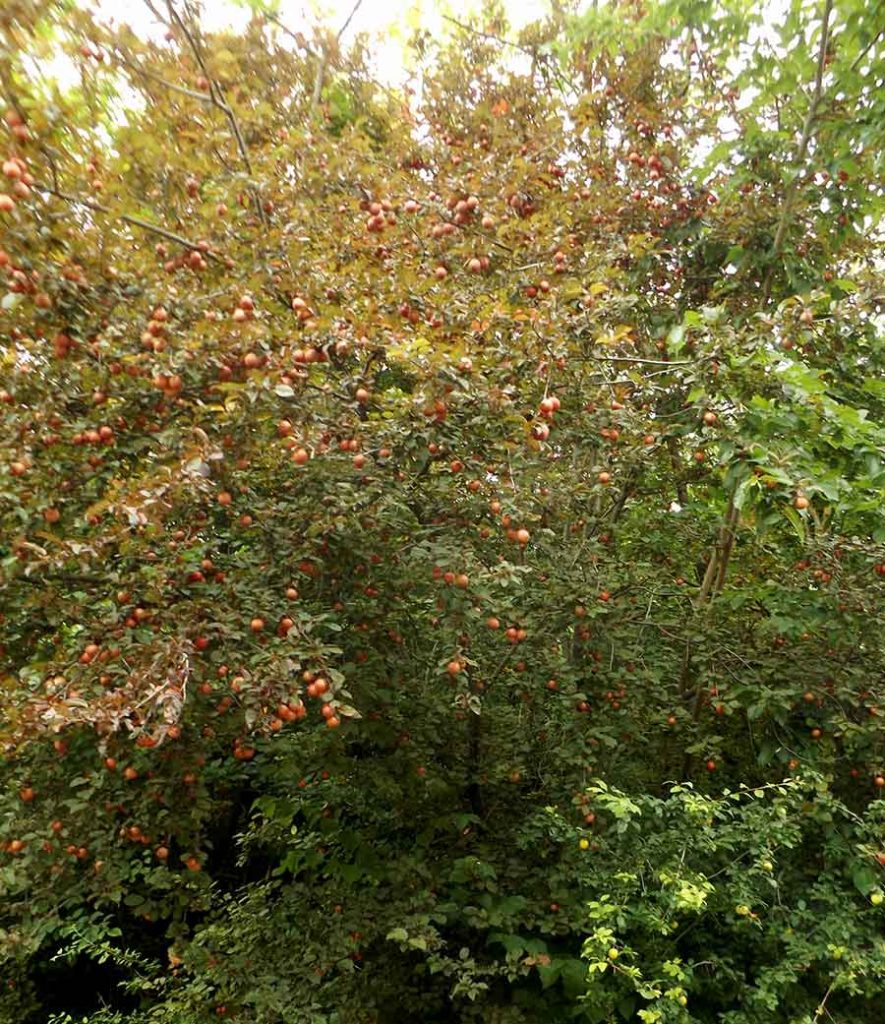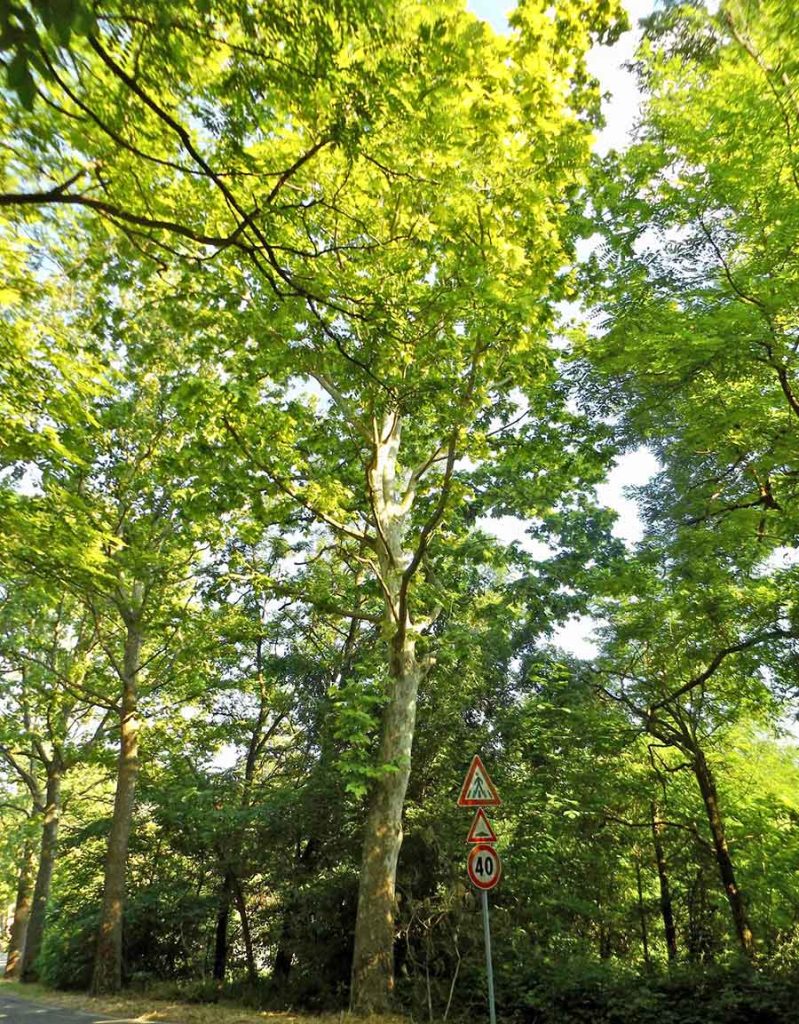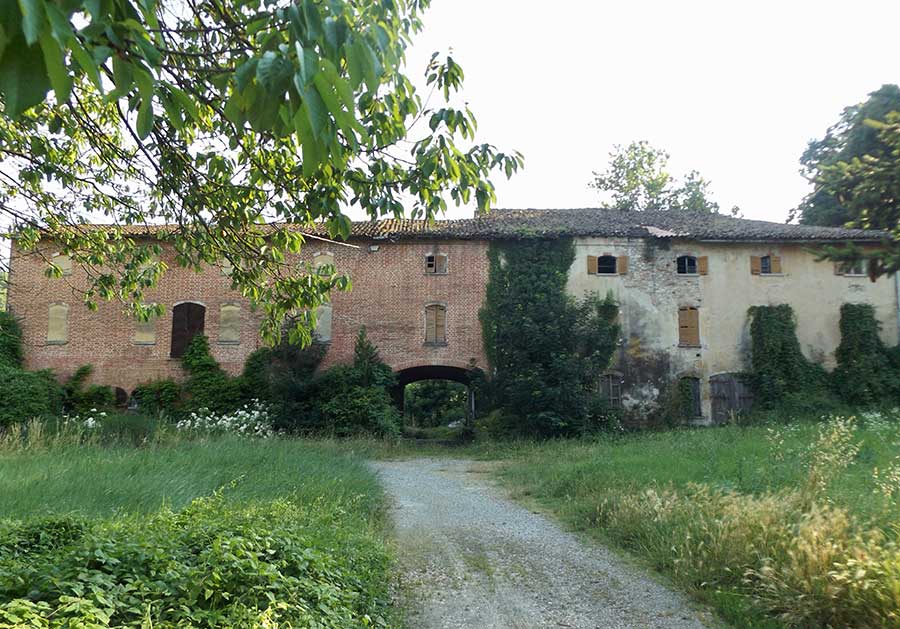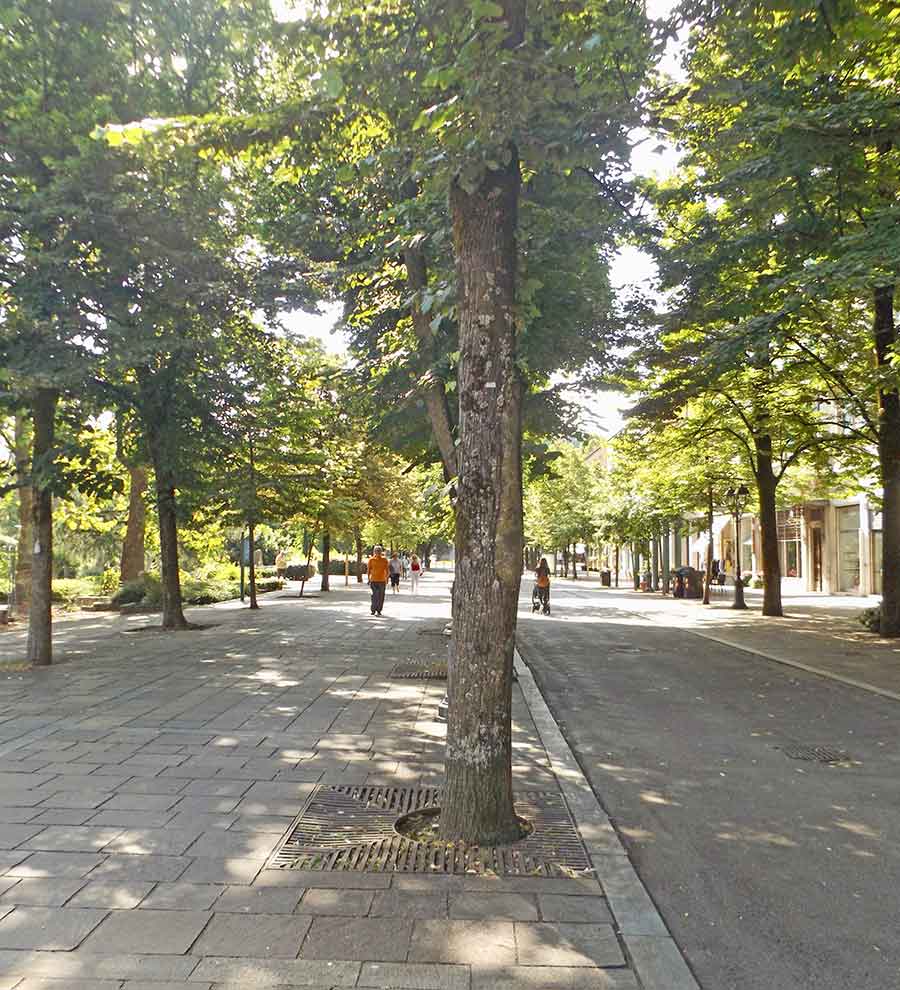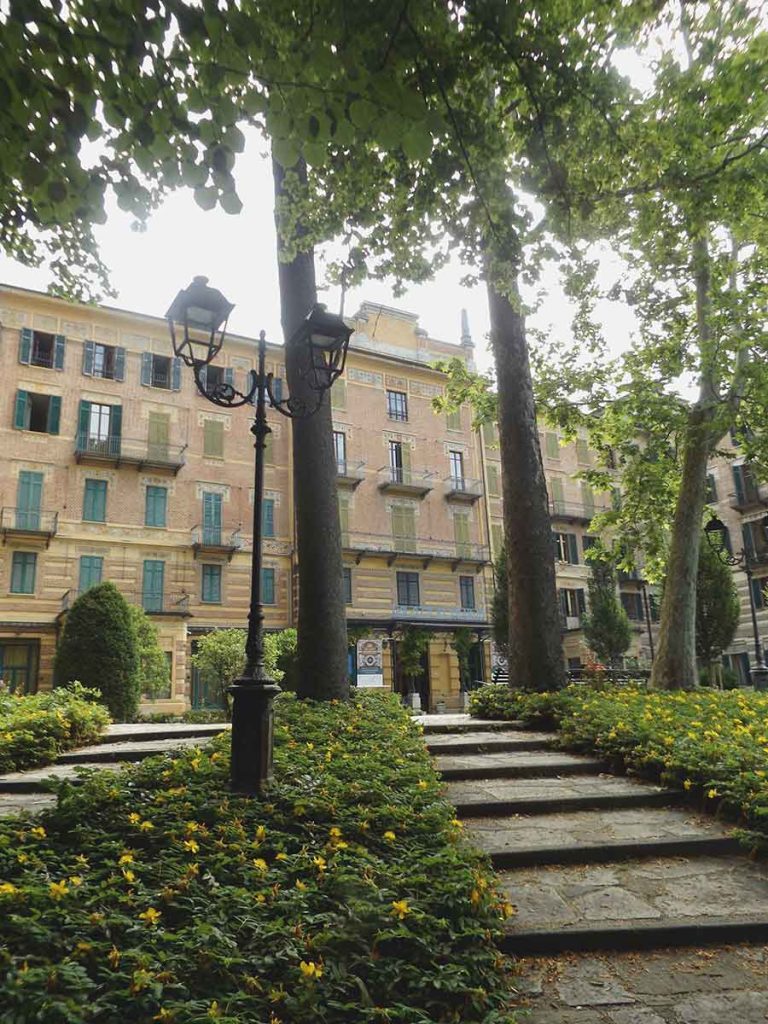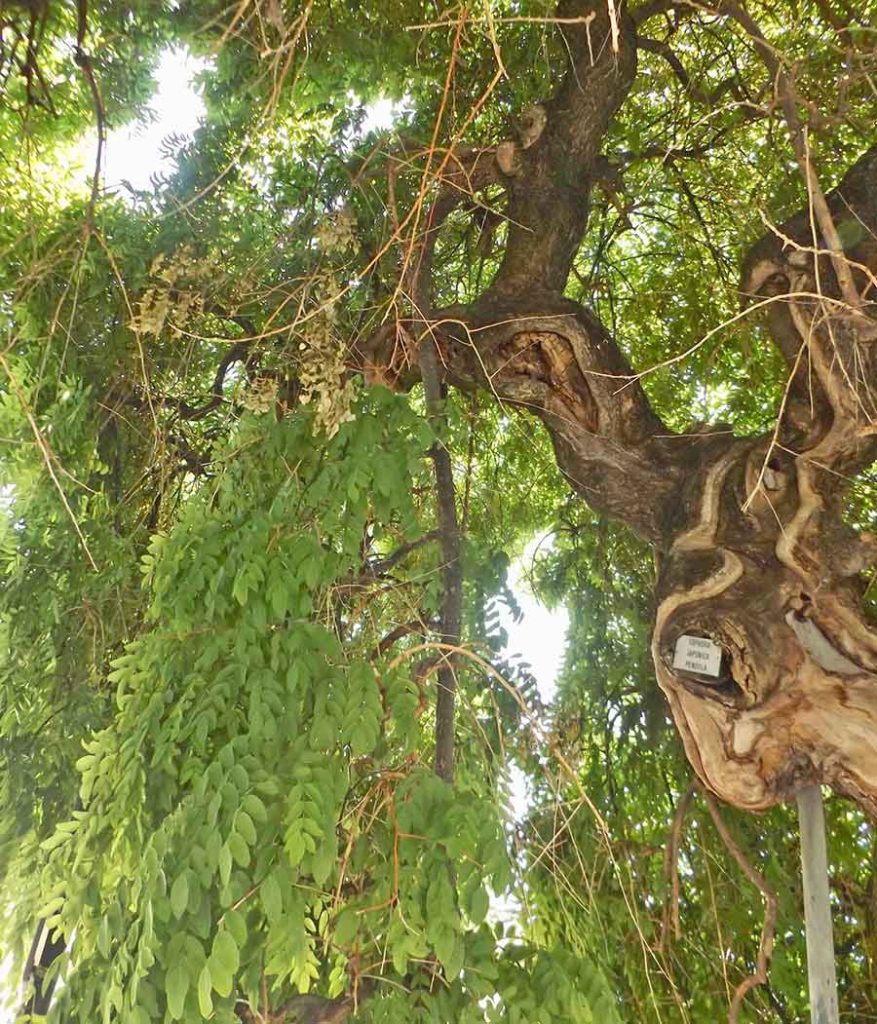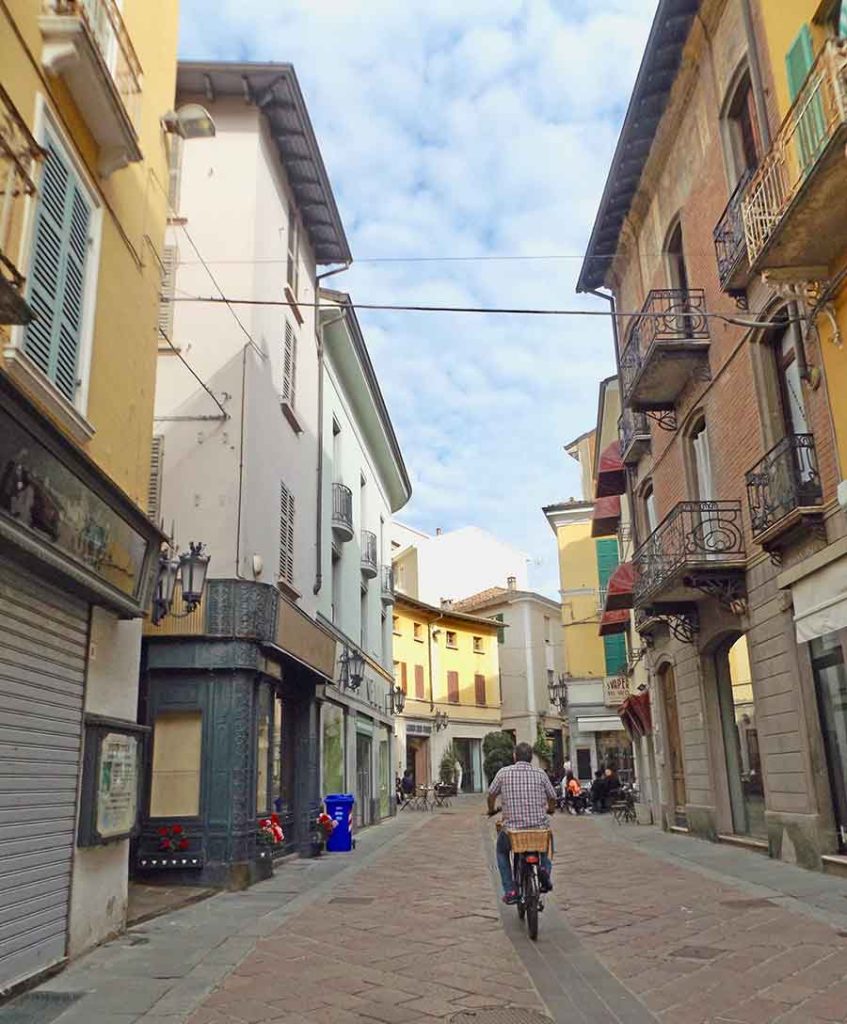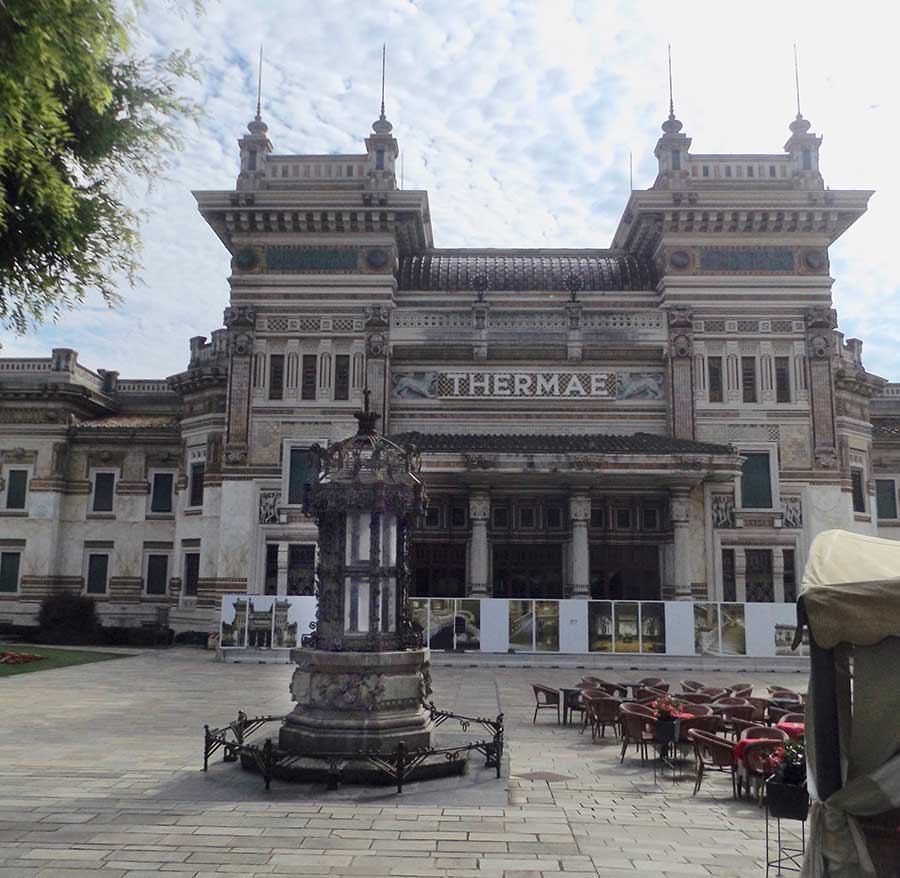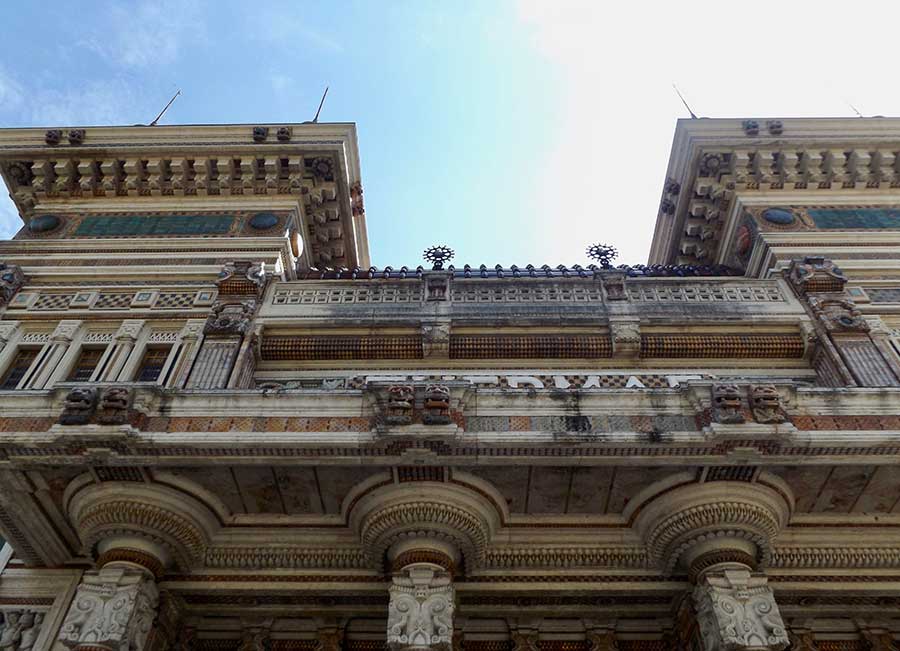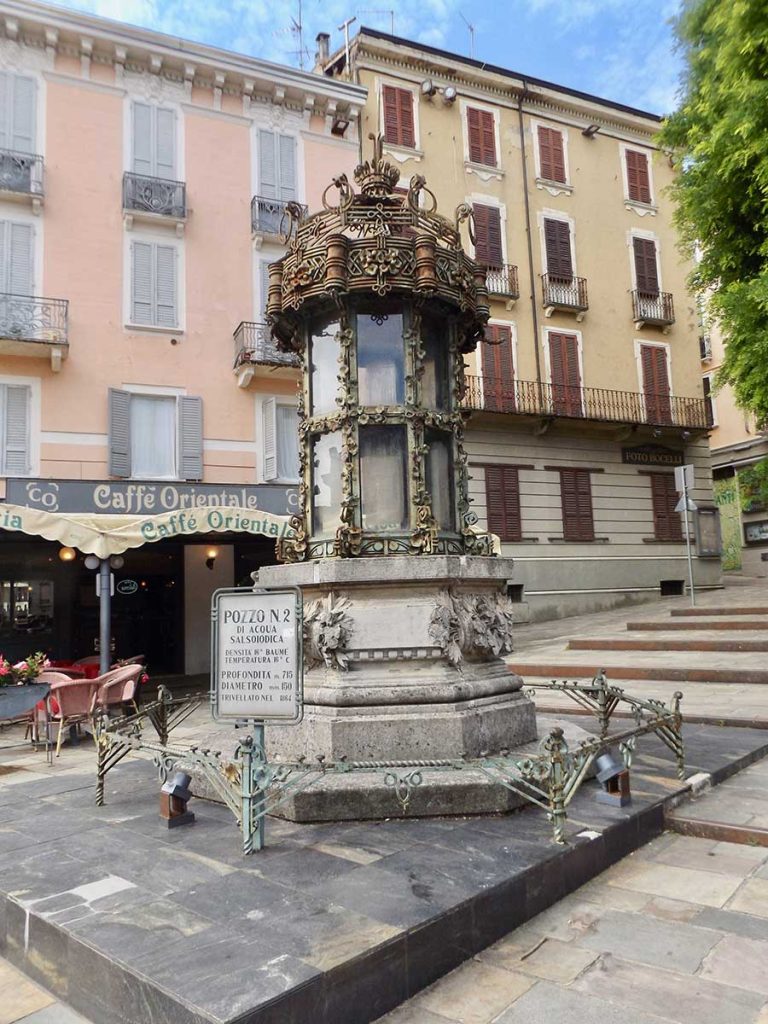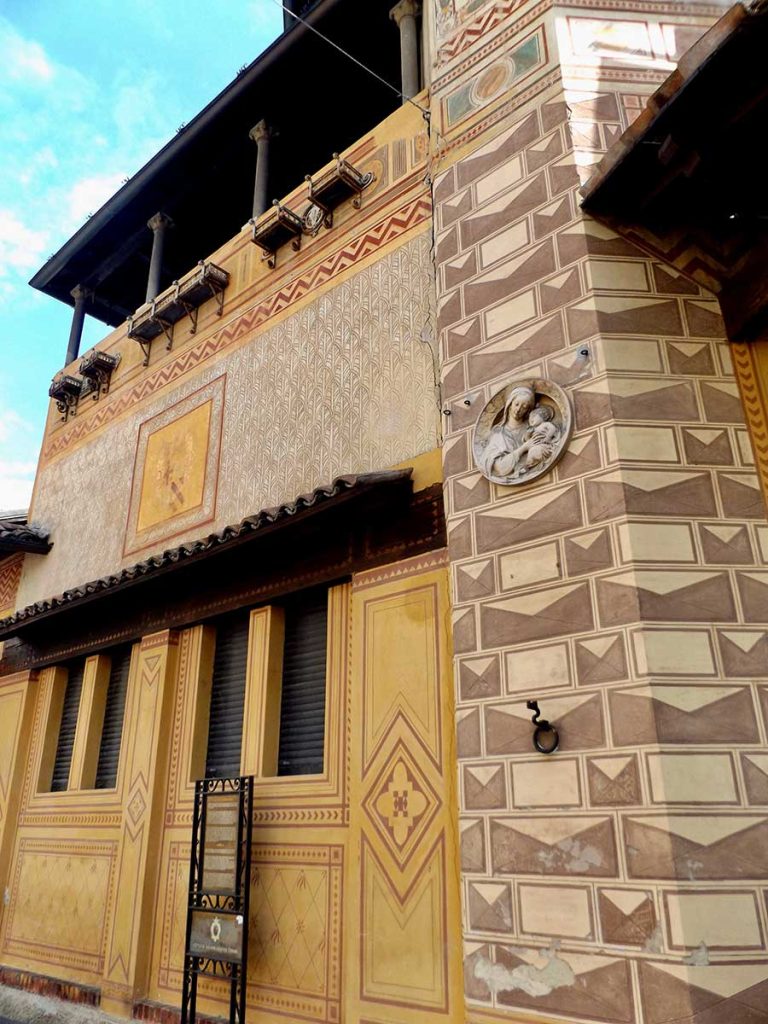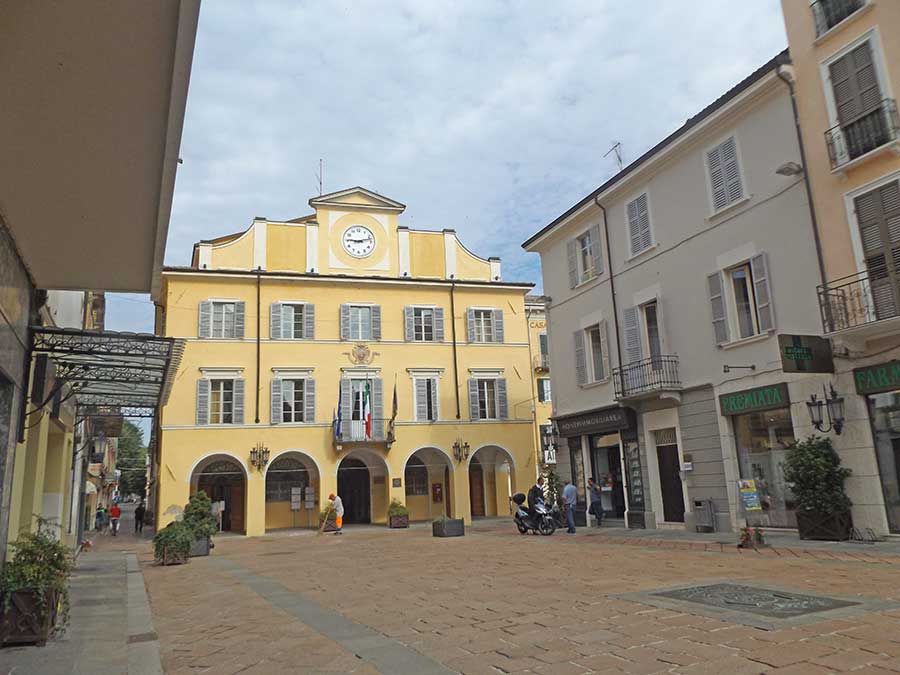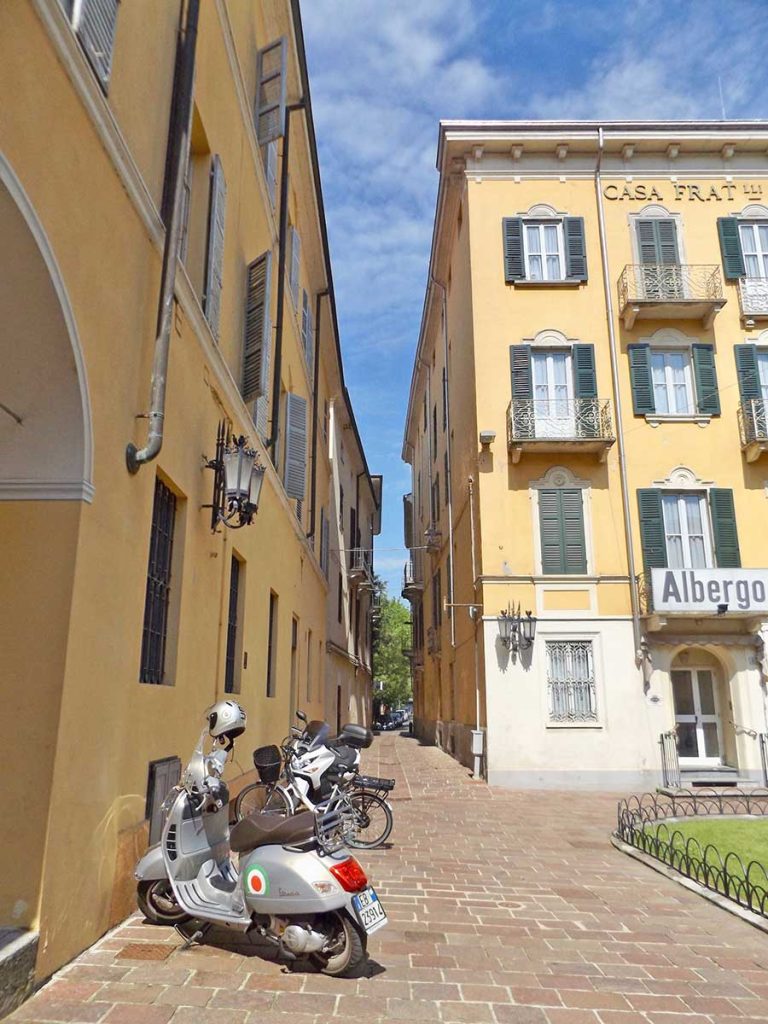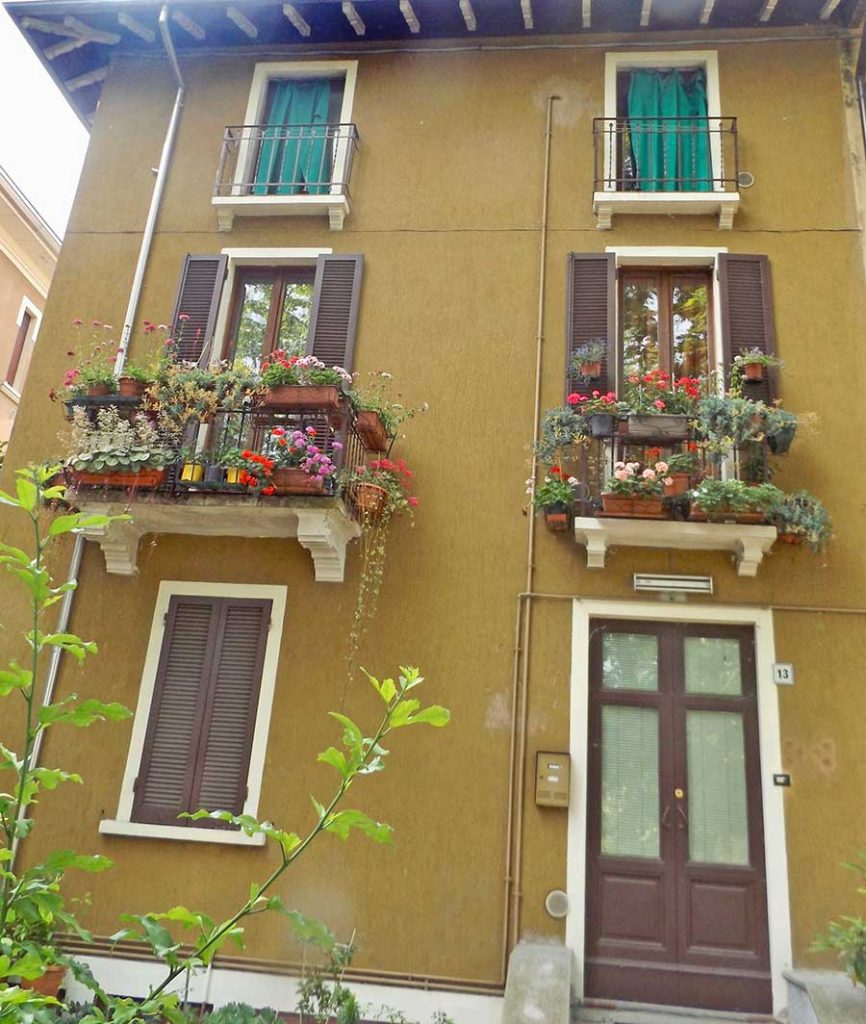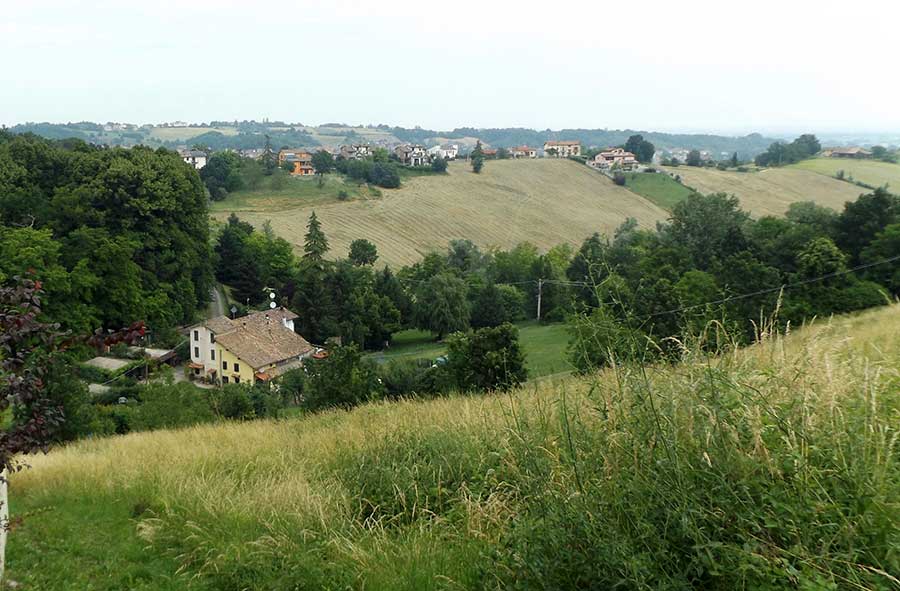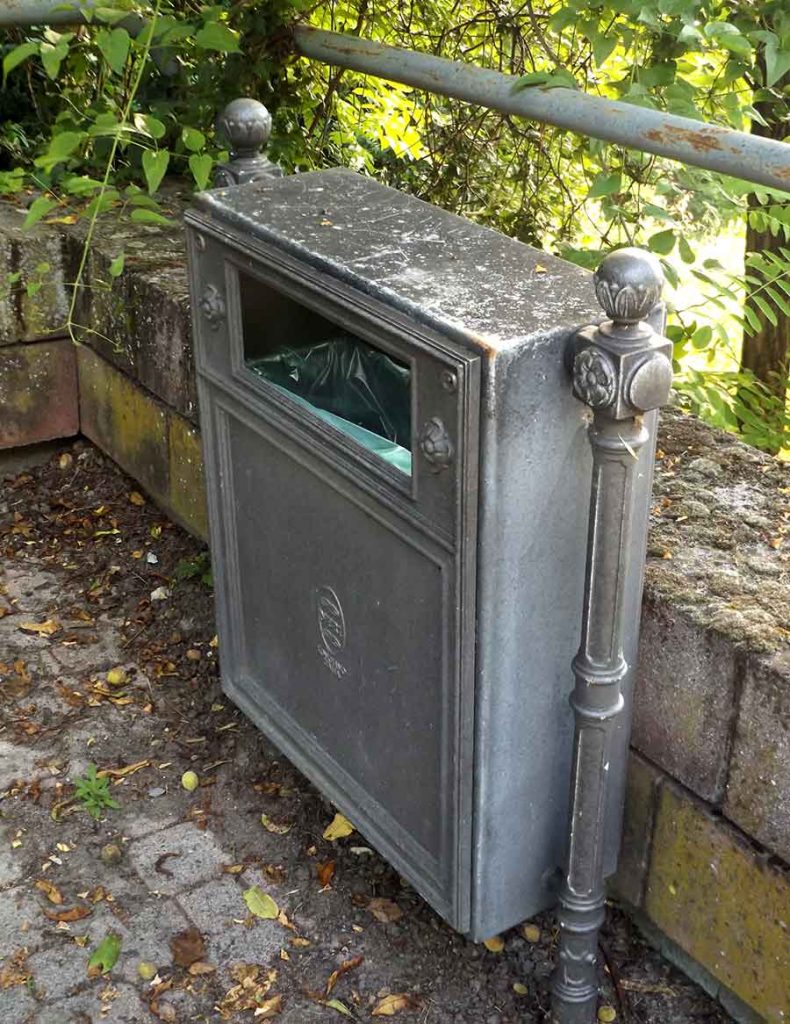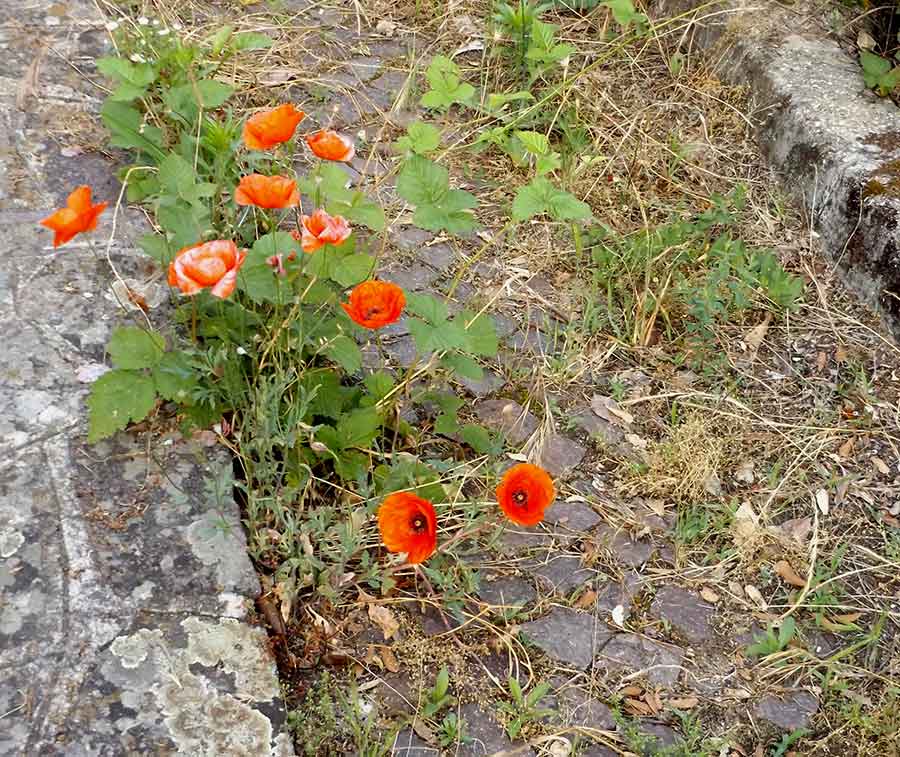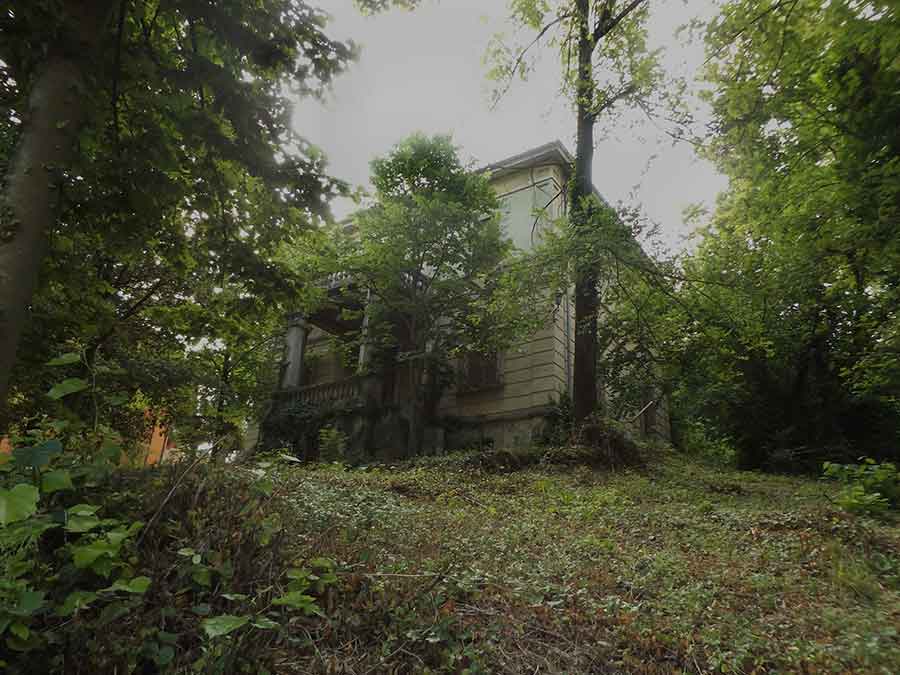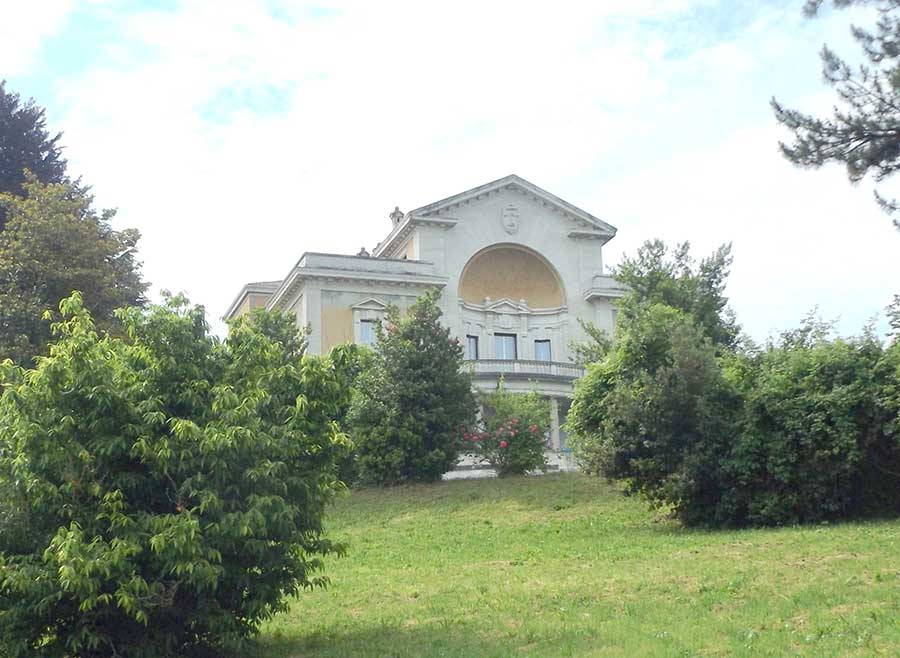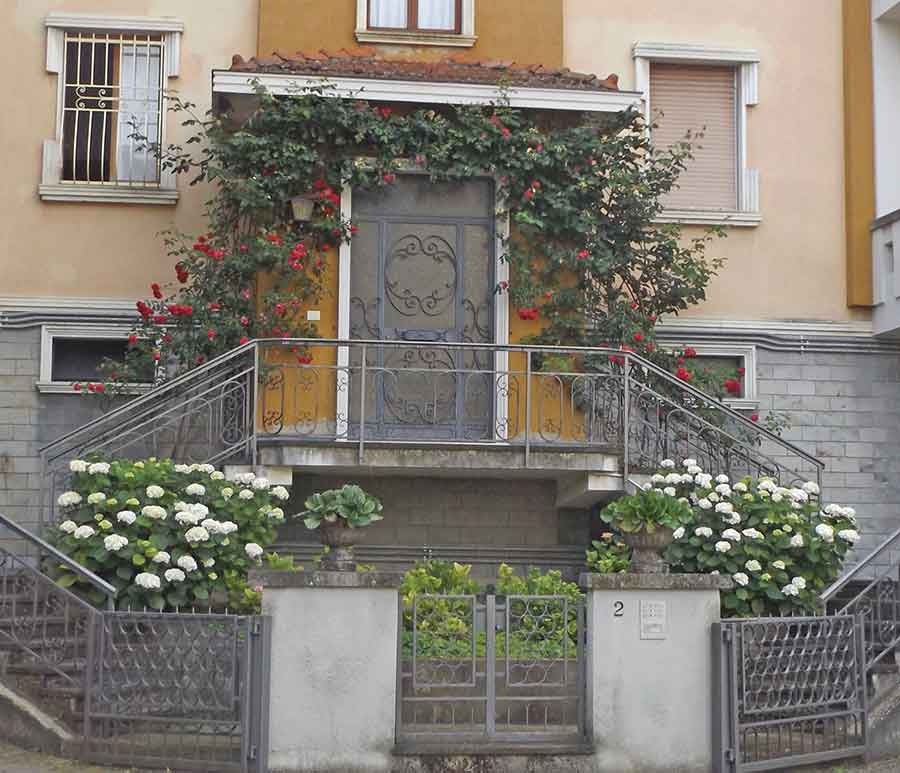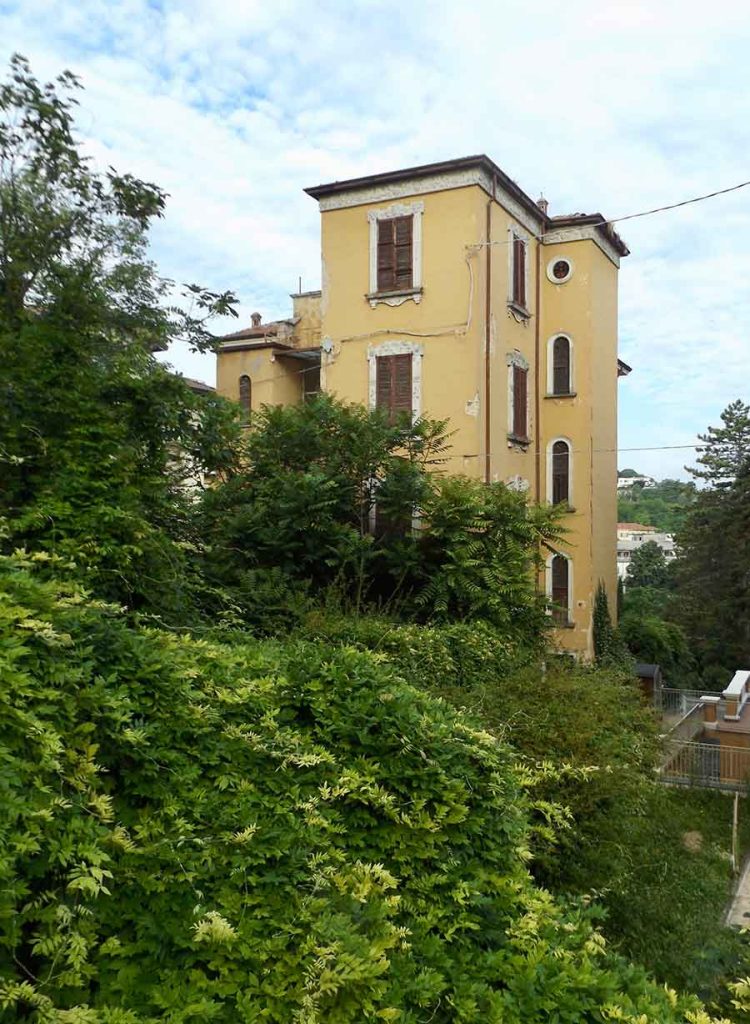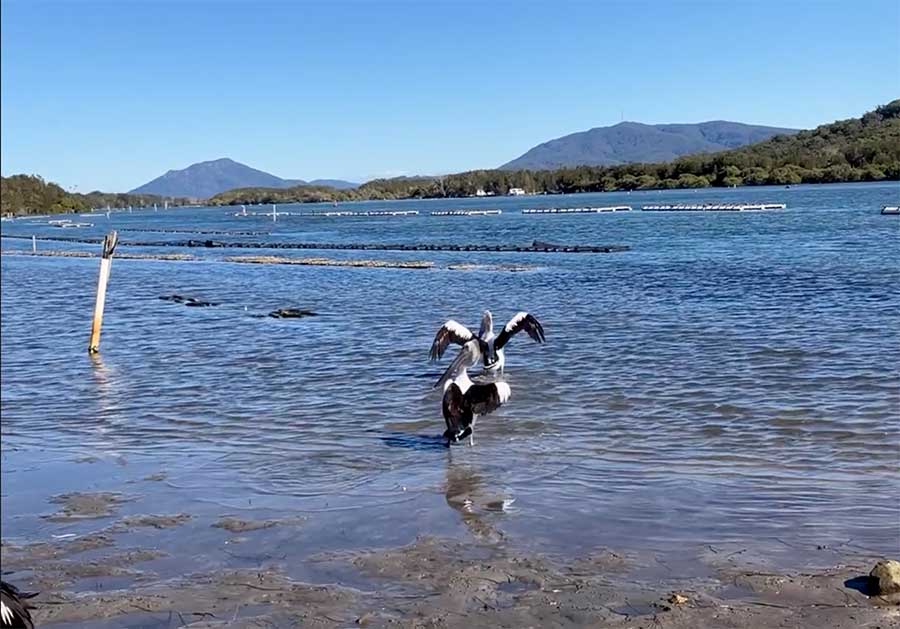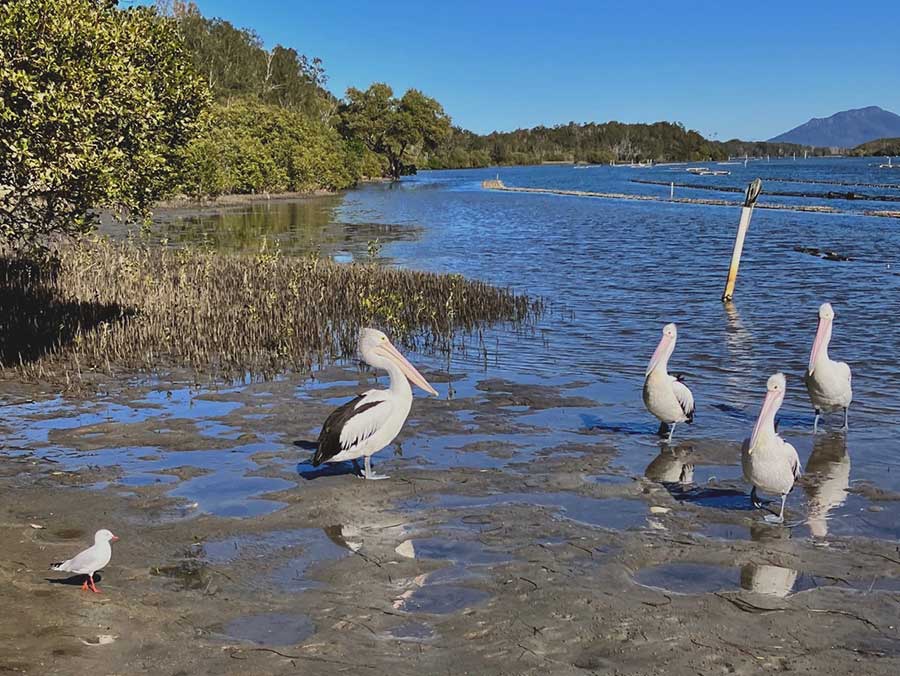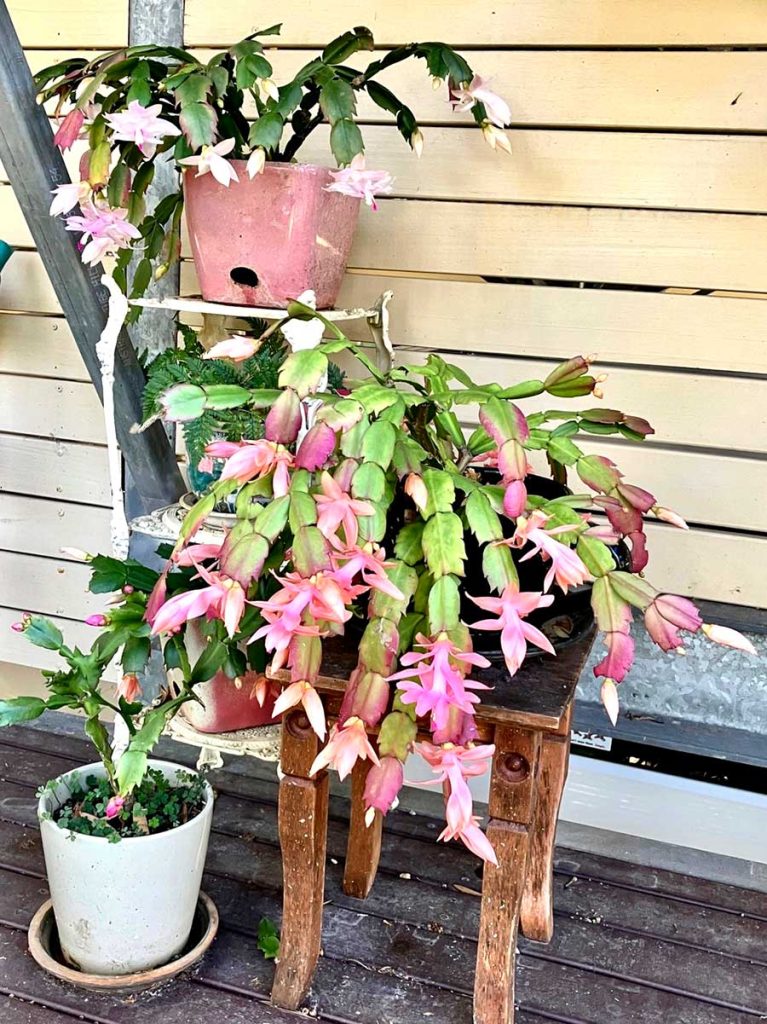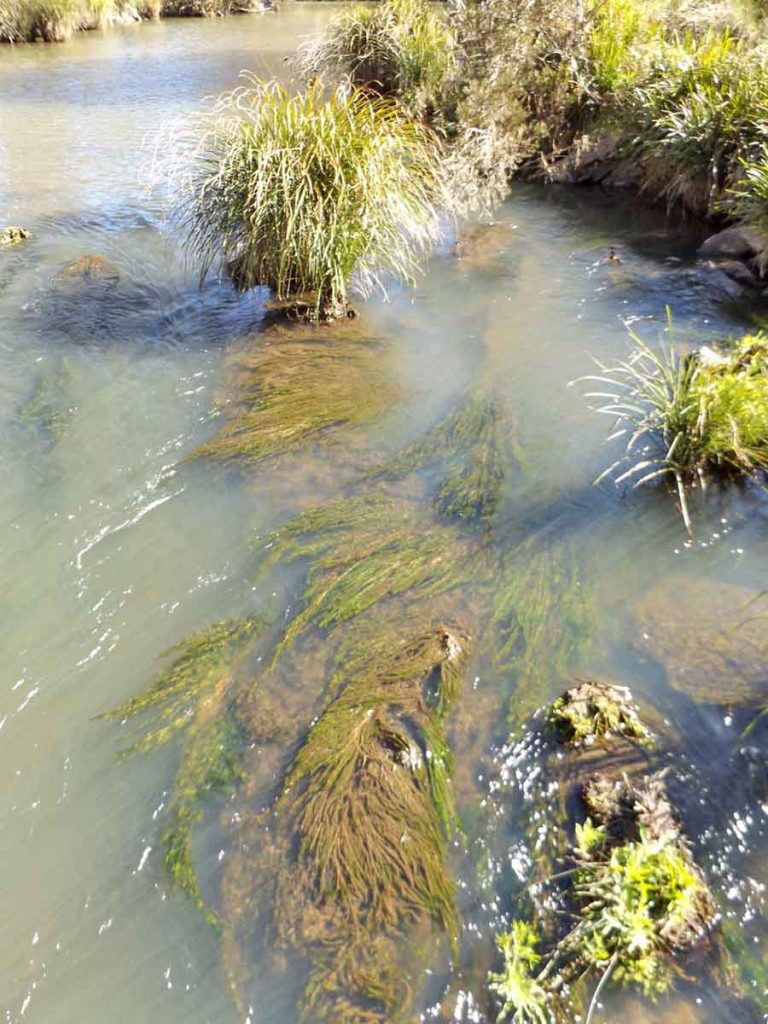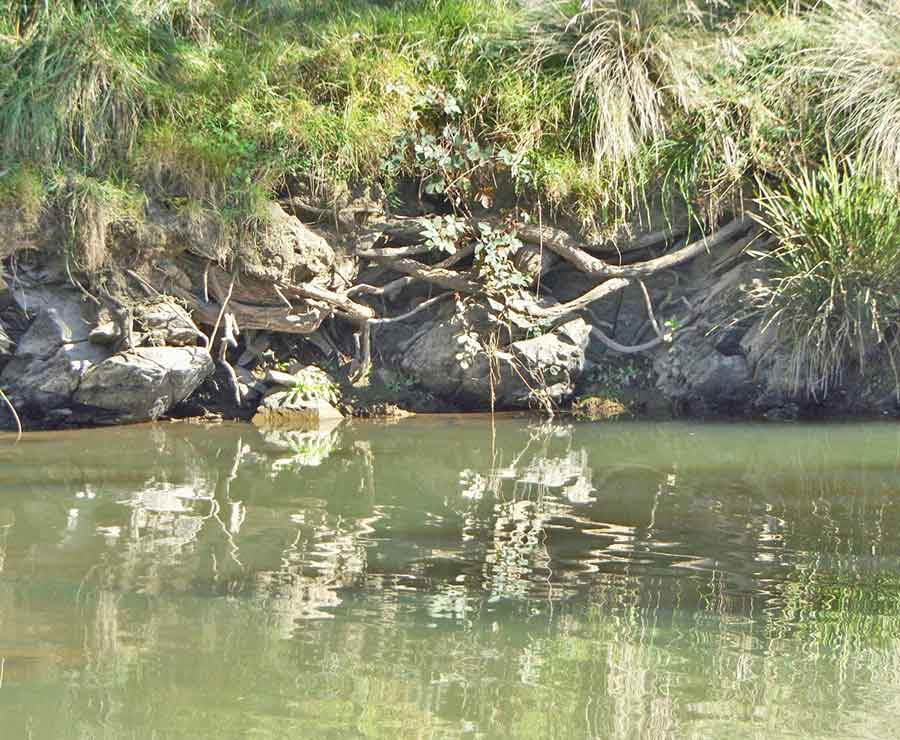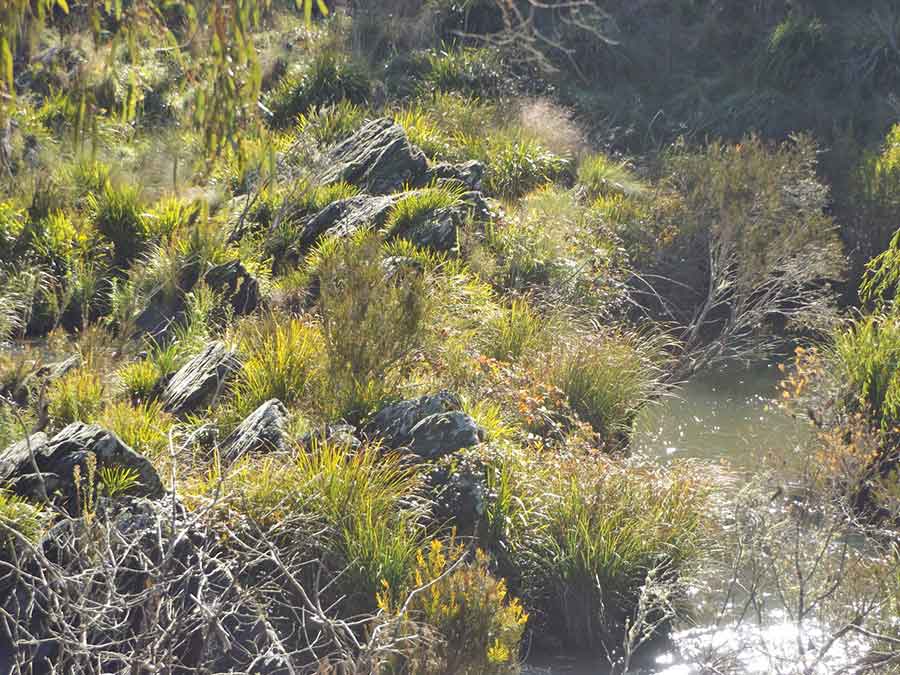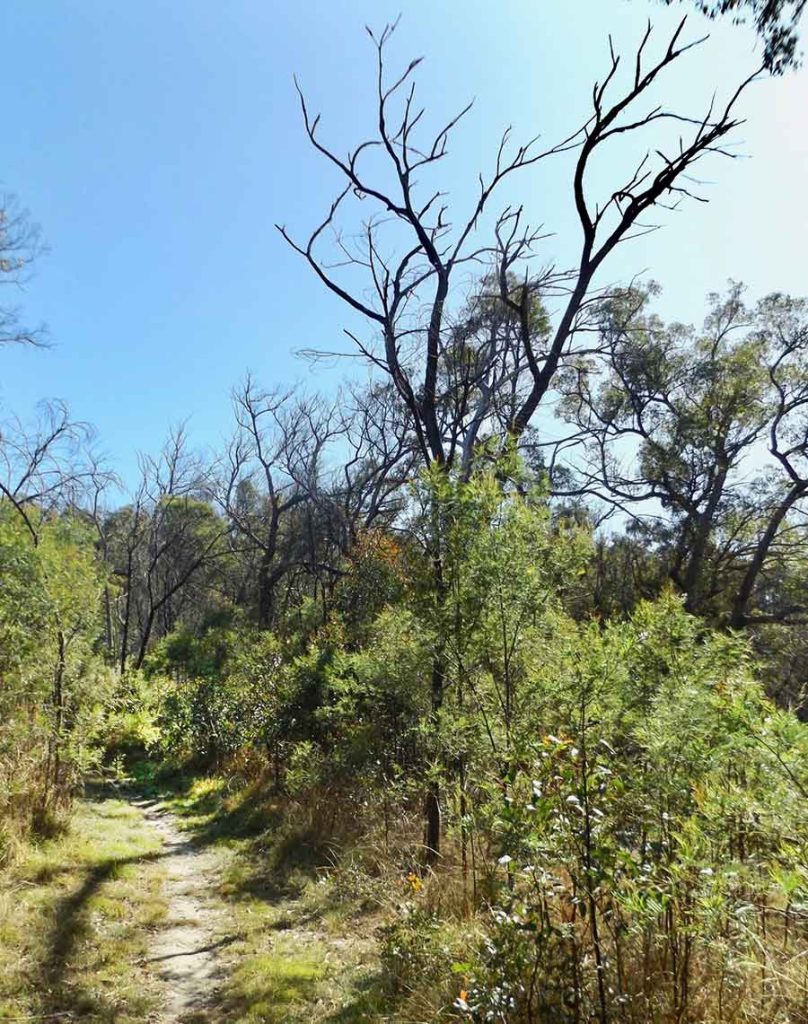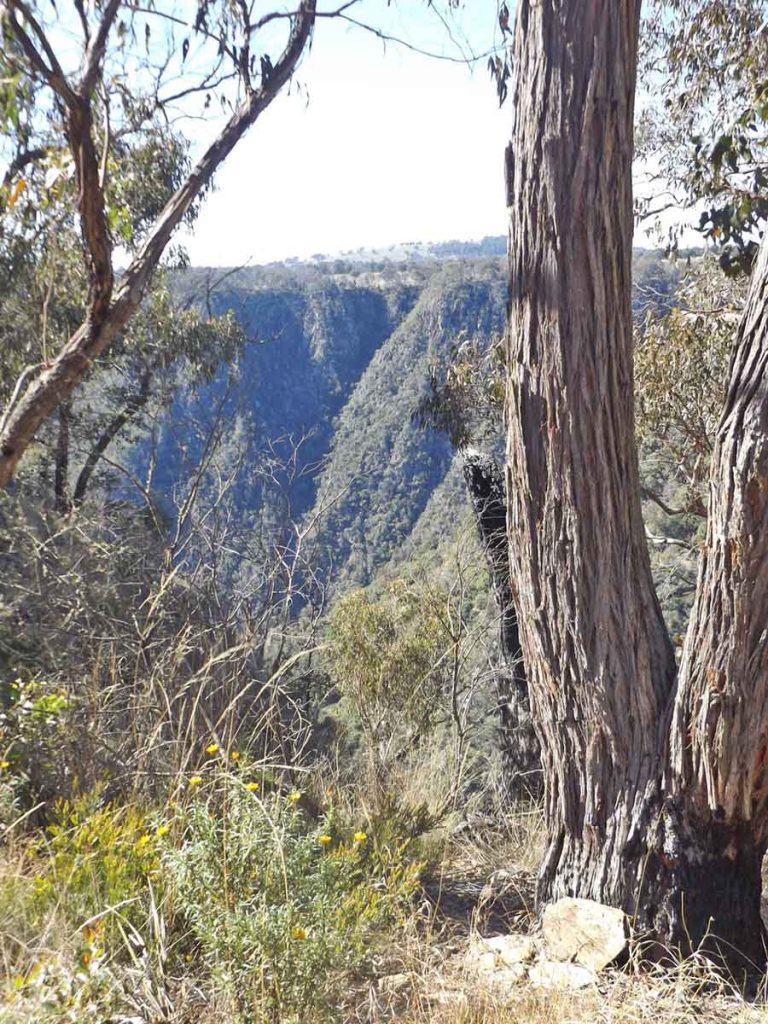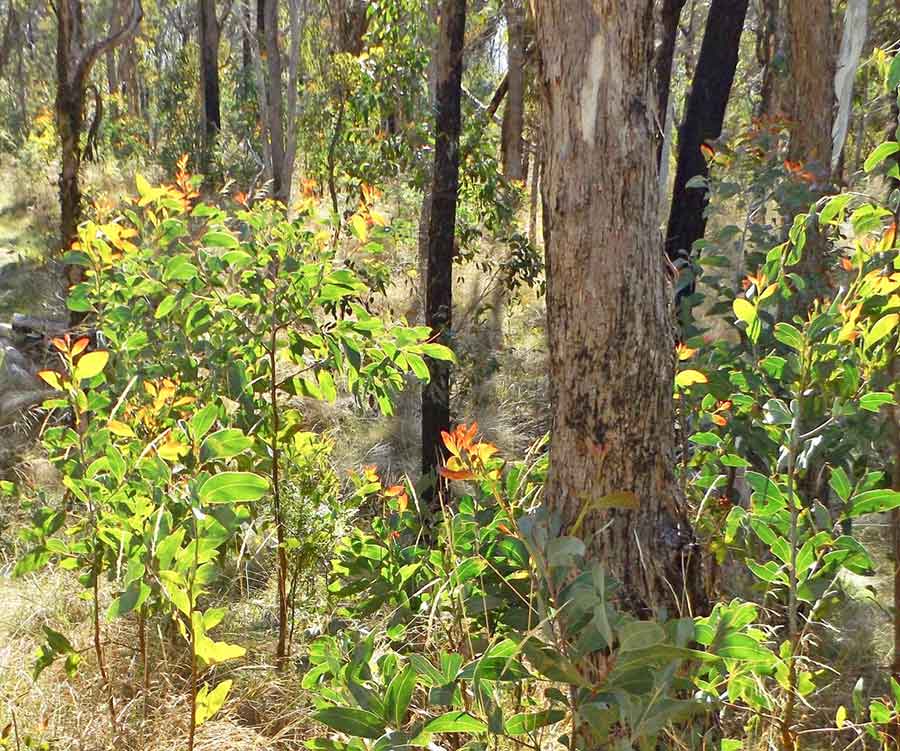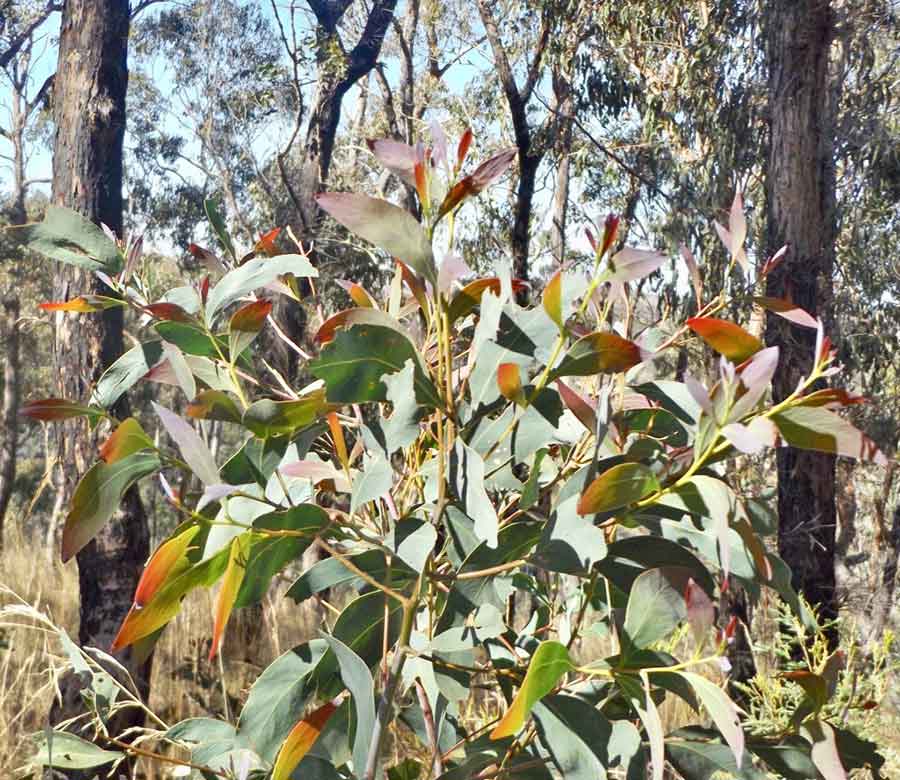The castle that most appealed to me was the closest to my friend’s home in Salsomaggiore. It is the Castello di Tabiano, just down the hill and atop another, up a winding road.
Even from the outside, the castle looks well kept, with very old and large trees gracing its edges. Early on this Sunday, there were only three of us to be guided through the Castle by the amiable and well informed Claire, who spoke English very well.
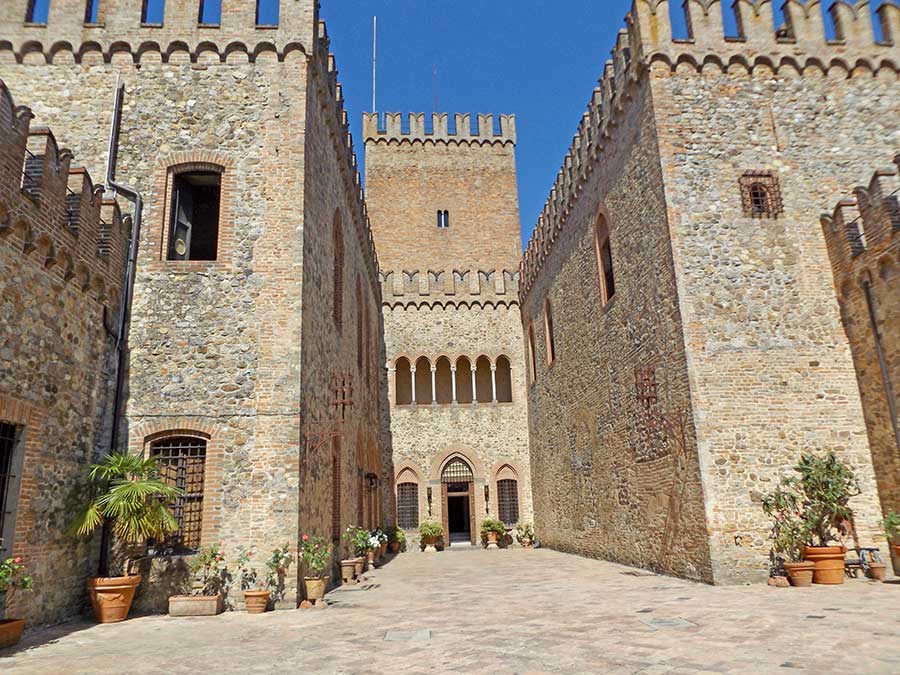
It was originally a military fort built by the Pallavicino family around the year 1000 to oversee the lucrative salt trade, where the salt was extracted from the thermal waters of Salsomaggiore and Tabiano and taken by horse to barges destined for Milan or Venice. It had a moat and a drawbridge and could house within its walls all the animals needed for fresh milk, eggs and meat, enough for the village and troops to survive even a year-long siege. The rainwater cisterns are still used today.
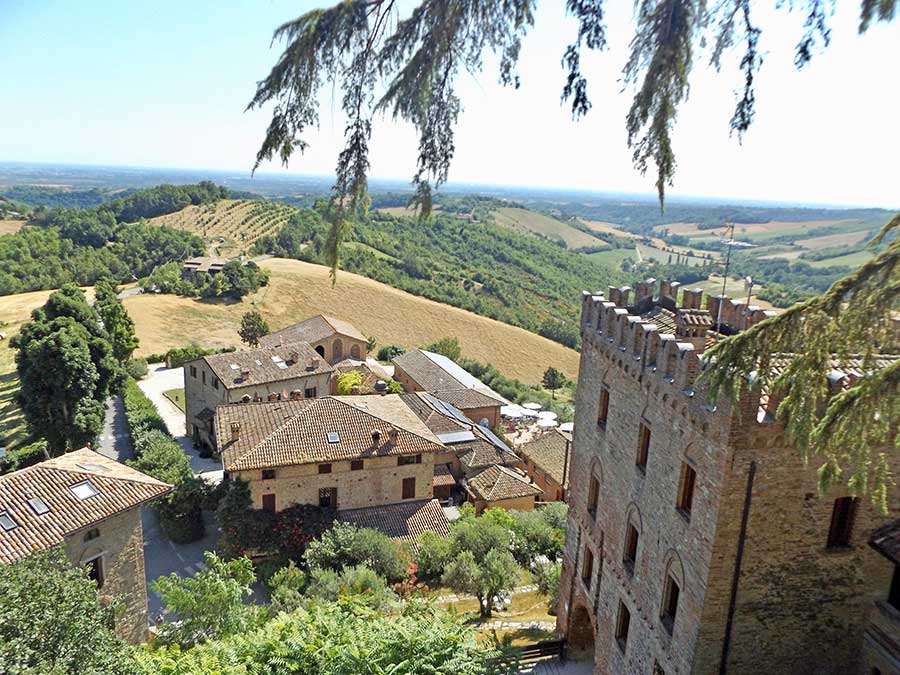
Bought by Giacomo Corazza in the late 19th century, it took 20 years of restoration by about 70 craftsmen to turn the abandoned fortress into the gracious home of today. Having made his fortune in London from ice cream and ice, Giacomo went on to turn the castle and its surrounding hectares into a highly productive farm: wheat, wine and cheese.
It was only 10 years ago that the castle and its village, its piggery and dairy, were transformed into a beautiful venue for weddings, events and conferences, plus a hotel and a restaurant. Even 25 years ago the family was still farming here.
And members of the family remain in residence.
It is this sense of continued life, with so much equipment so recently stilled, that imbues the castle with its special ambience.

Of course a chapel had to be added for the family, and the shallow horse-friendly steps were replaced by a grand staircase in pink marble.
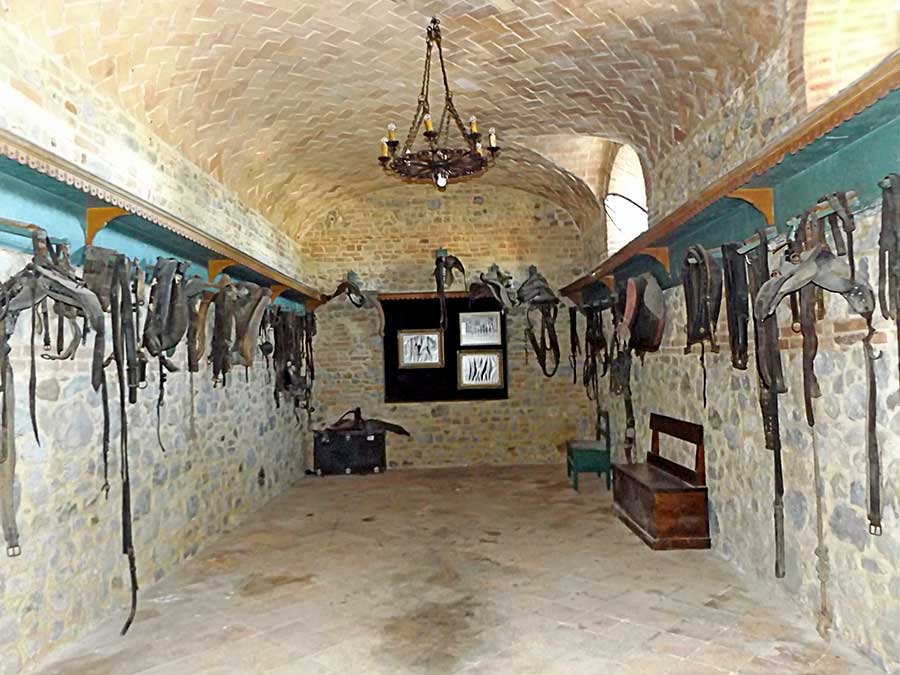
Although the stables became the wine cellars, the horse history is still there, with the tack room looking as neat and ready as it once must have.
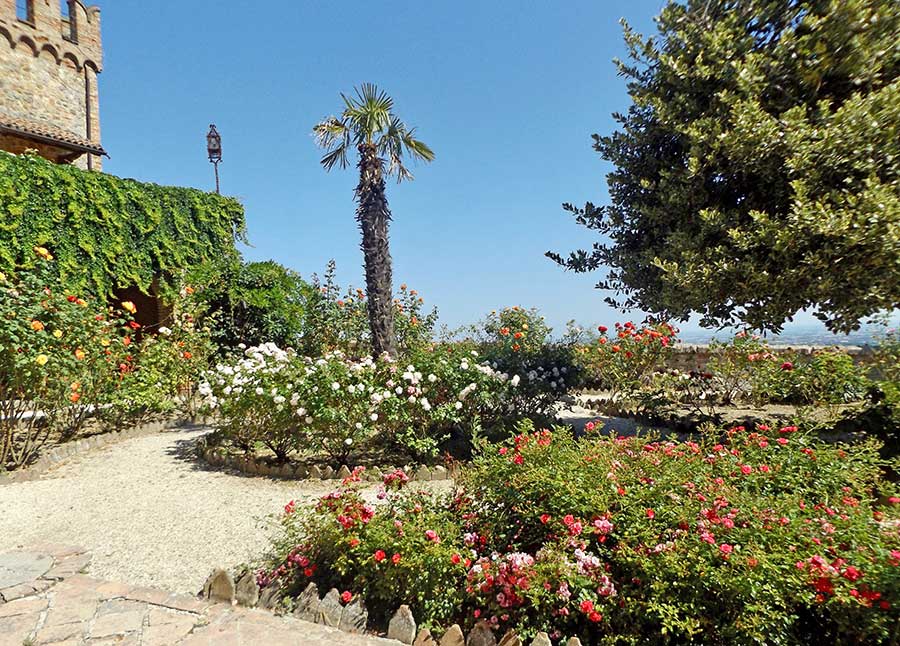
The whole castle was built to follow the rock beneath, with the rainwater cisterns using that rock; the rose garden with its stunning views is actually atop an icehouse cave, where snow would be brought in, squeezed into ice, sprinkled with straw and sand, and raised as needed.
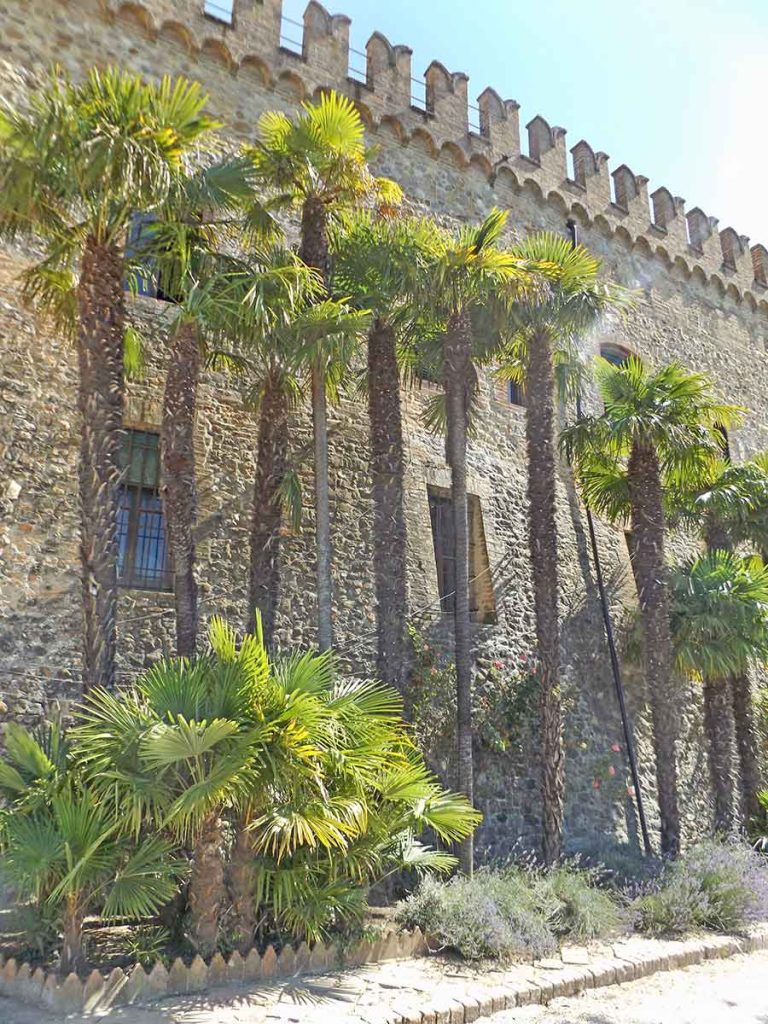
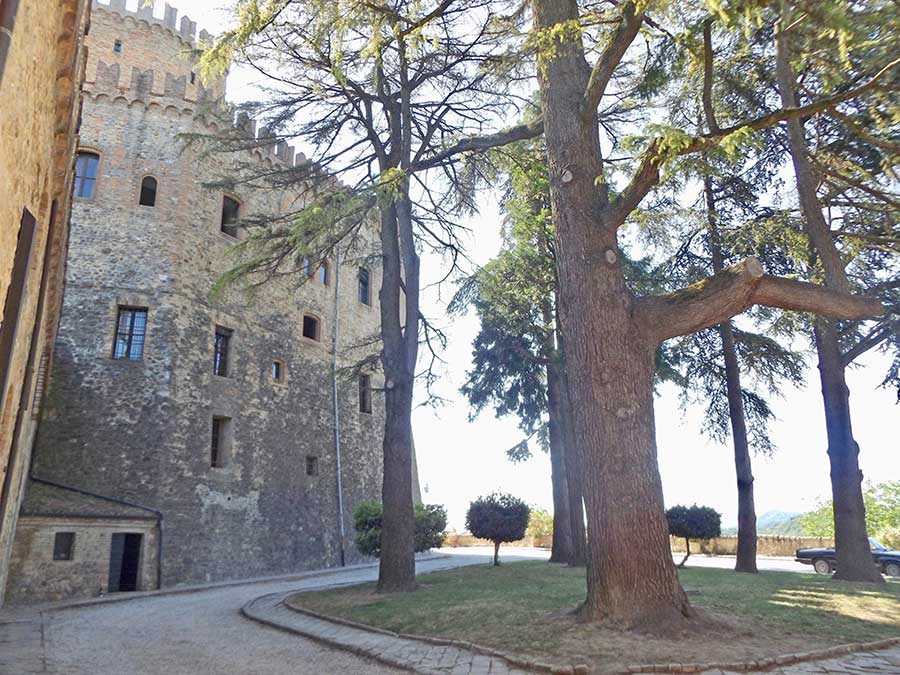
The 1800s’ passion for exotic plants brought such trees as palms and Lebanese cedars, and the micro-climate created by the sea breeze, albeit from 50 kms away, ensures their survival. That lavender at the base of the palms apparently kills bacteria that attack palm trees.

In the area where the family lives, chandeliers of Venetian glass illuminate grand ceilings, in rooms like the Ballroom, the Hunting Room and Dining room, filled with treasures and tastes brought with them from London. Here Claire is noting the fireplace lined with turquoise majolica tiles.
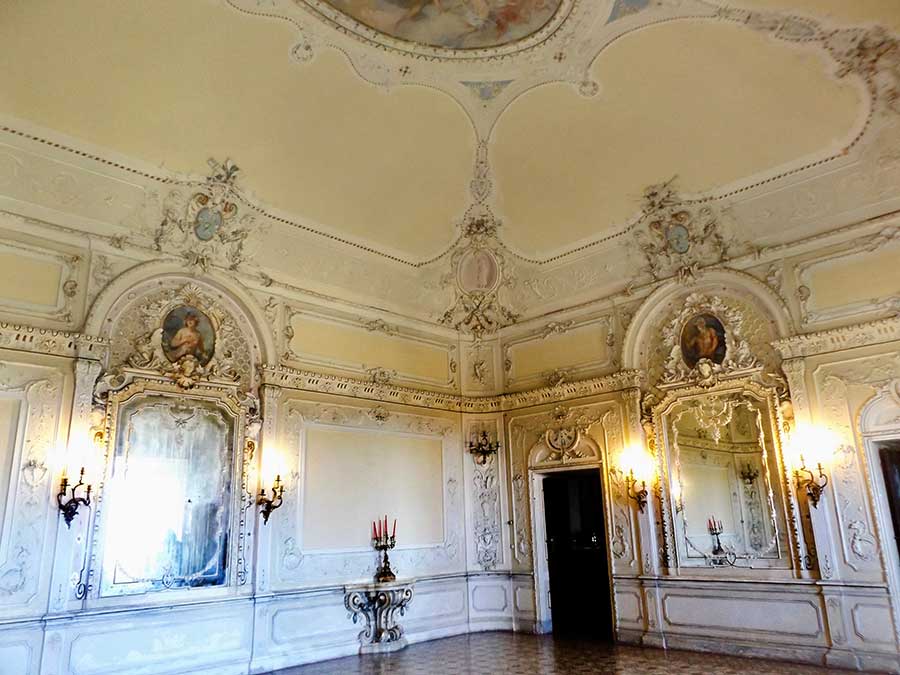
Certainly the Ballroom, or Mirrored Room, is impressive, with enormous and elaborately framed mirrors from London.
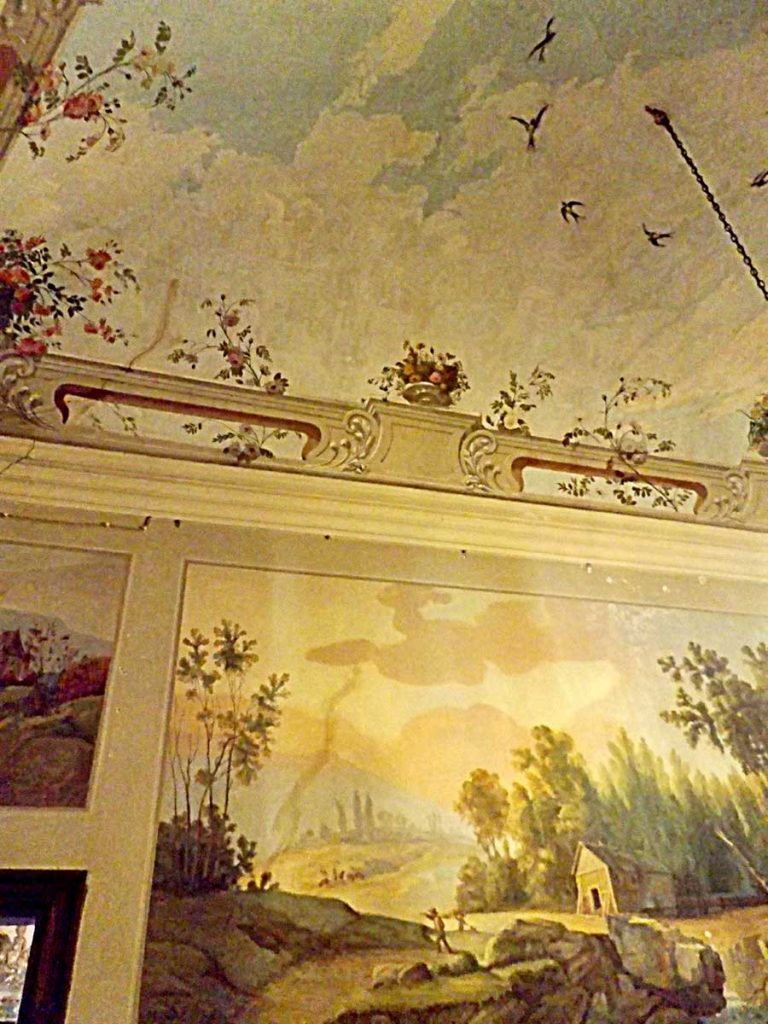
But my favourite room was the Children’s Room, pleasantly and charmingly decorated as their playroom.
The family has great plans for further restoration, including of the Corazza greenhouses that had used the Roman grottoes under the walls. I’d like to come back in five years and see… and perhaps stay in the hotel and enjoy the history and the view up close…
Much about Castello di Tabiano will remain etched in my mind.
Thanks Claire!
